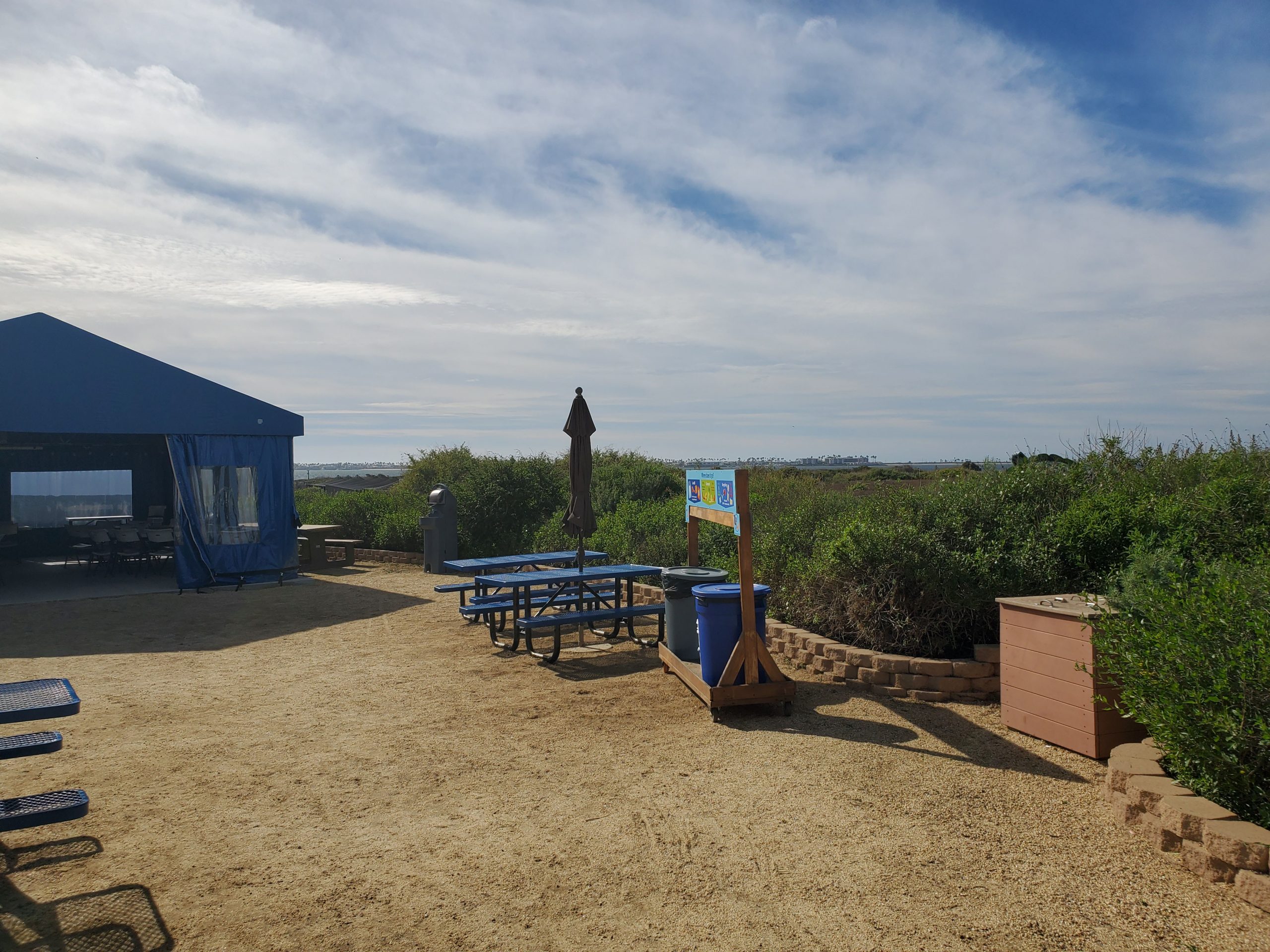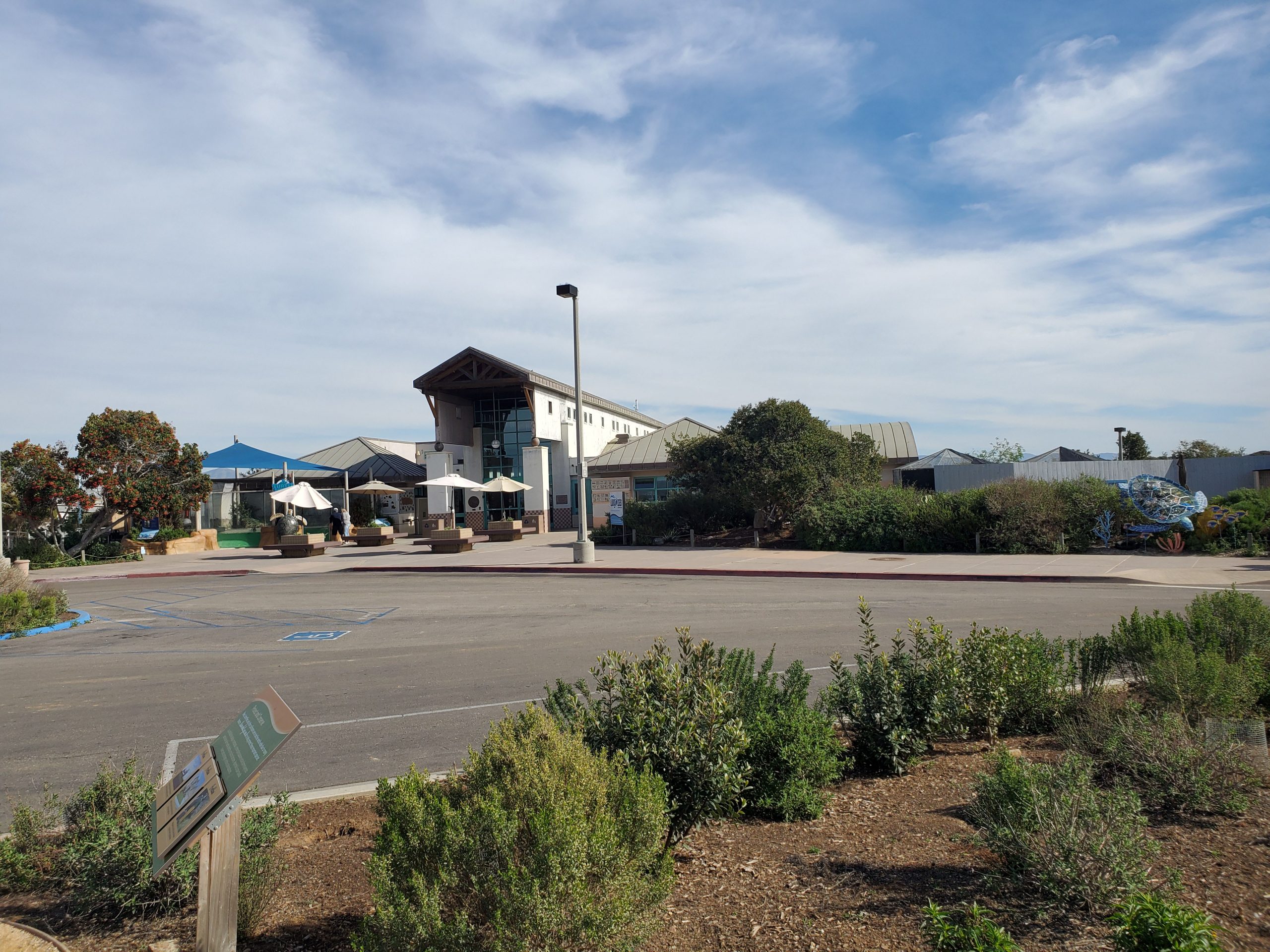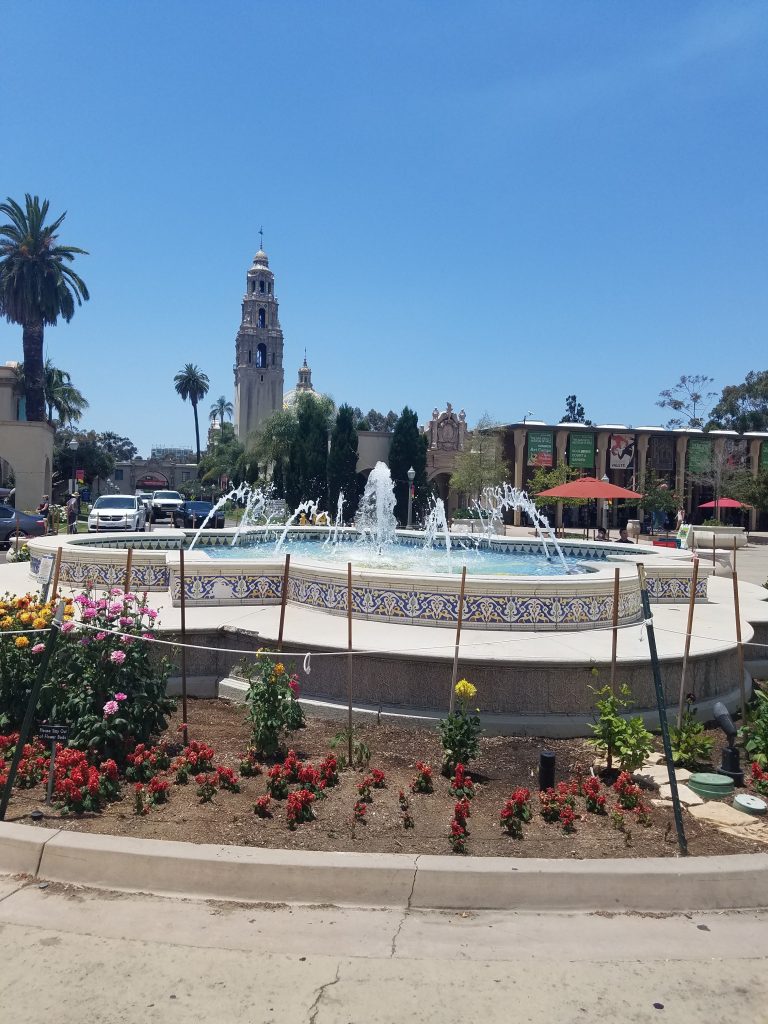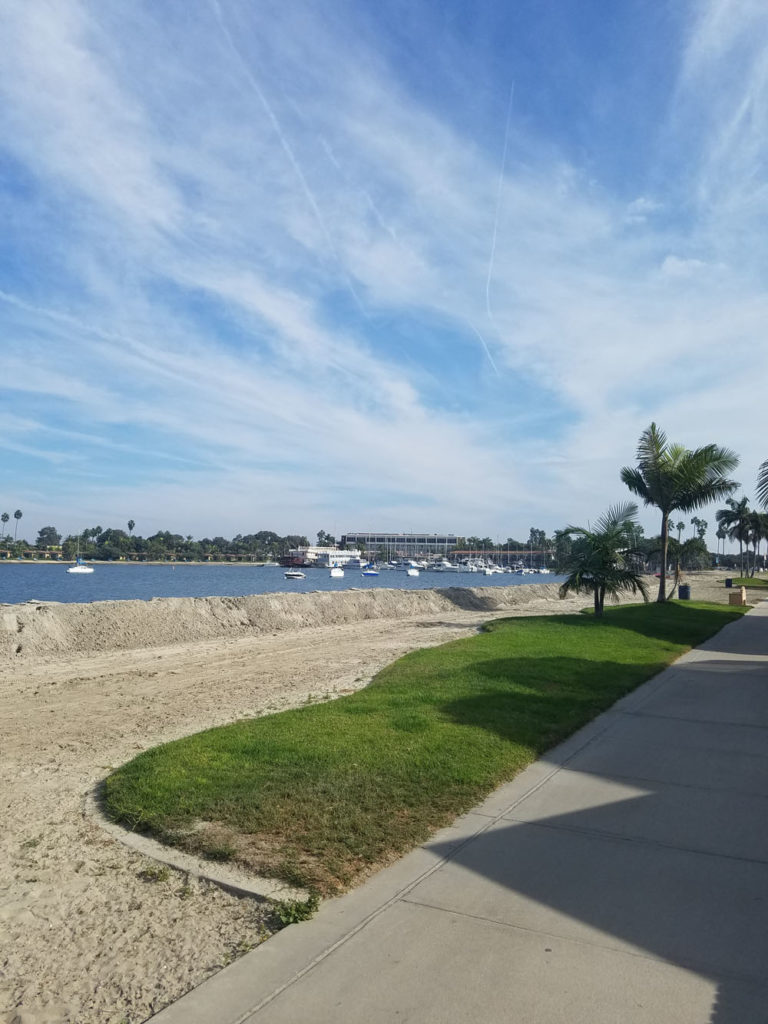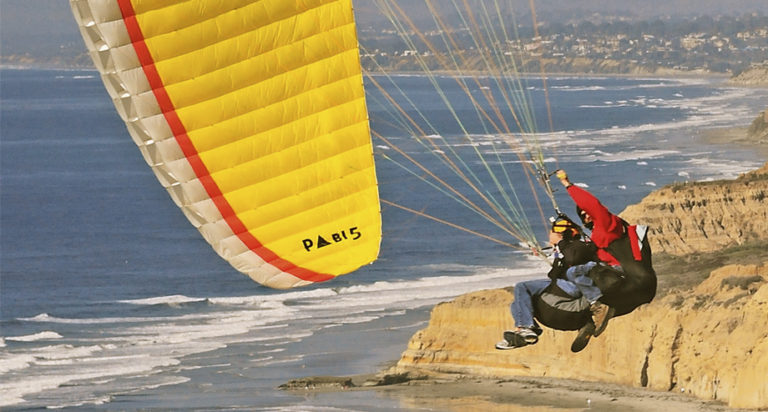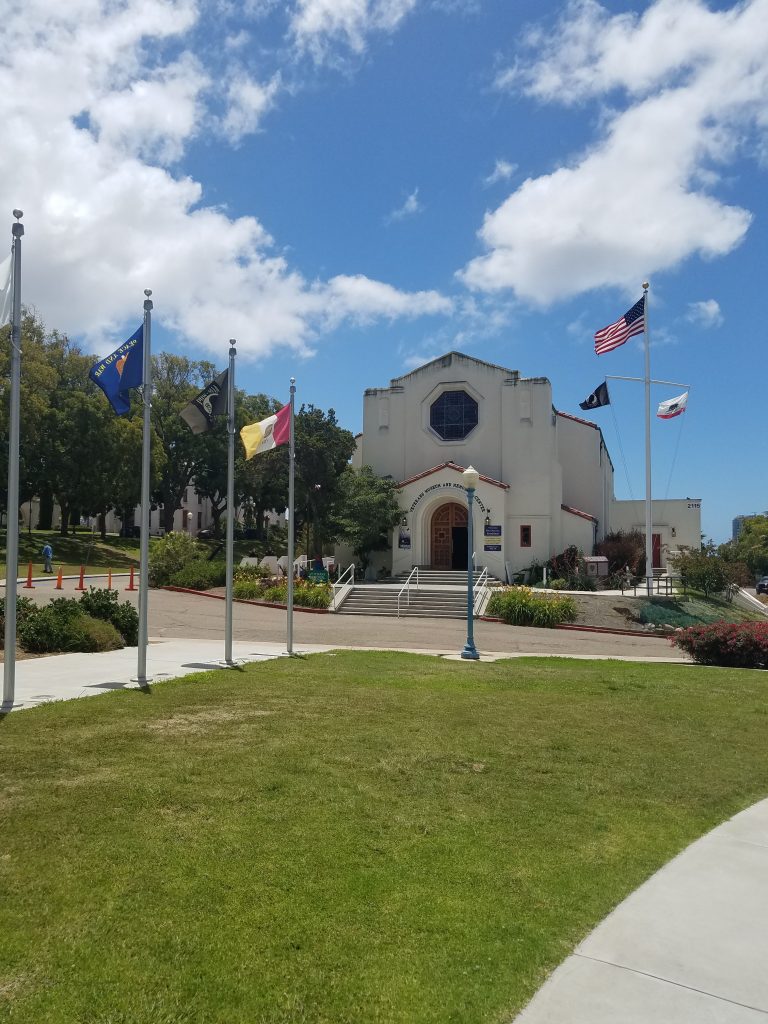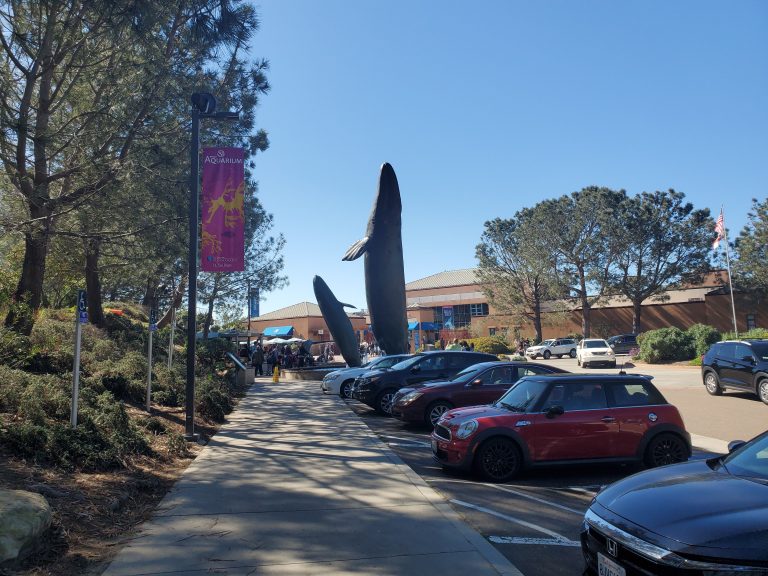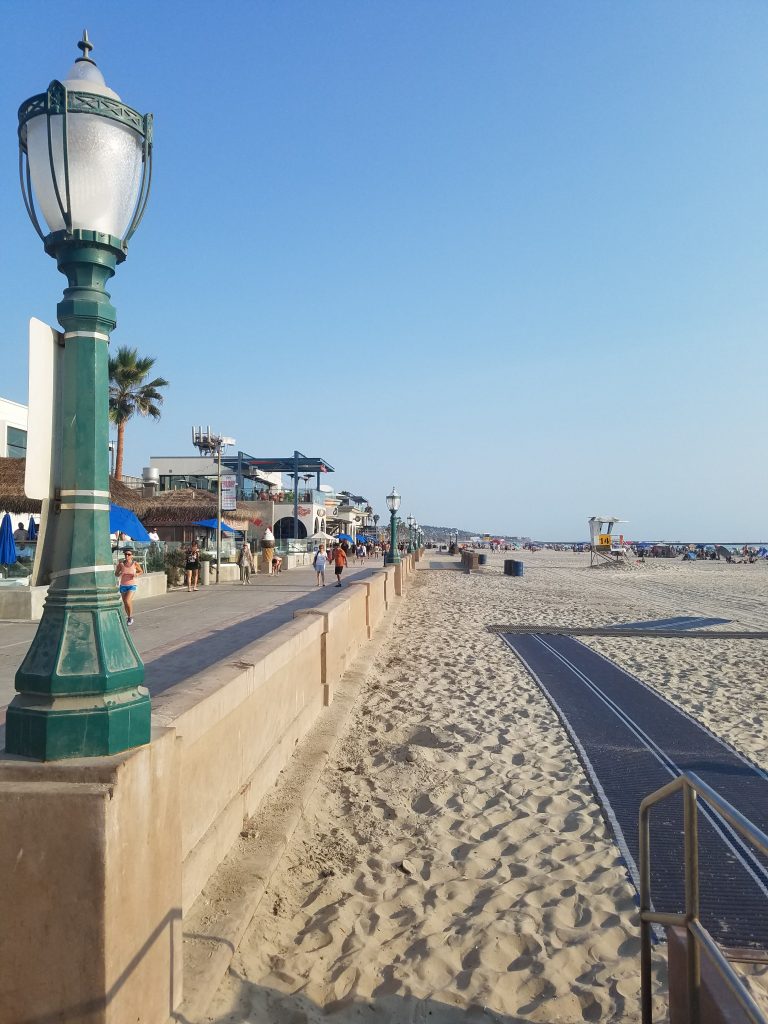Visiting the Living Coast Discovery Center in Chula Vista
The Living Coast Discovery Center is a hidden gem in Chula Vista, about 15 minutes south of downtown San Diego. The center is a combination zoo and aquarium. There are hands-on exhibits with all kinds of animals native to the San Diego coastal area. This includes fish, sea turtles, sharks, sting rays, birds of prey and reptiles.
WEBSITE: https://www.thelivingcoast.org/
Jump Ahead To
Overview
We have been coming to the Living Coast Discovery Center since it was called the Chula Vista Nature Center. During this time, it was operated by the city of Chula Vista. Starti9ng in 2010 it became operated by a non-profit and changed its name to the Living Coast Discovery Center.
Unfortunately, the center has struggled with financial issues over the years. However, in recent years an active donation program has not only kept the center open but led to significant enhancements.
The location of the Living Coast Discovery Center is in the sensitive Sweetwater Marsh National Wildlife Refuge. The center opened in 1987 and the refuge opened two years later. The center is next to the headquarters for the San Diego Bay National Wildlife Refuge.
The area around the Living Coast Discovery Center represents about 300 acres of about 2,600 acres within the national refuge. During World War I this was the site of a large plant that turned kelp into gunpowder. Today, the focus is on preservation, including a program to save the native light-footed Ridgways rail clapper bird.
Tickets and Location
The Living Coast Discovery Center is right off the I-5 freeway along the south east end of San Diego Bay. The parking lot for the center is right at the E Street exit.
Because of the fragile nature of the bay area, the center is reached via a shuttle from the parking lot. Both the shuttle and parking are free. The shuttle runs on a regular basis and we have never had to wait more than 5 minutes.
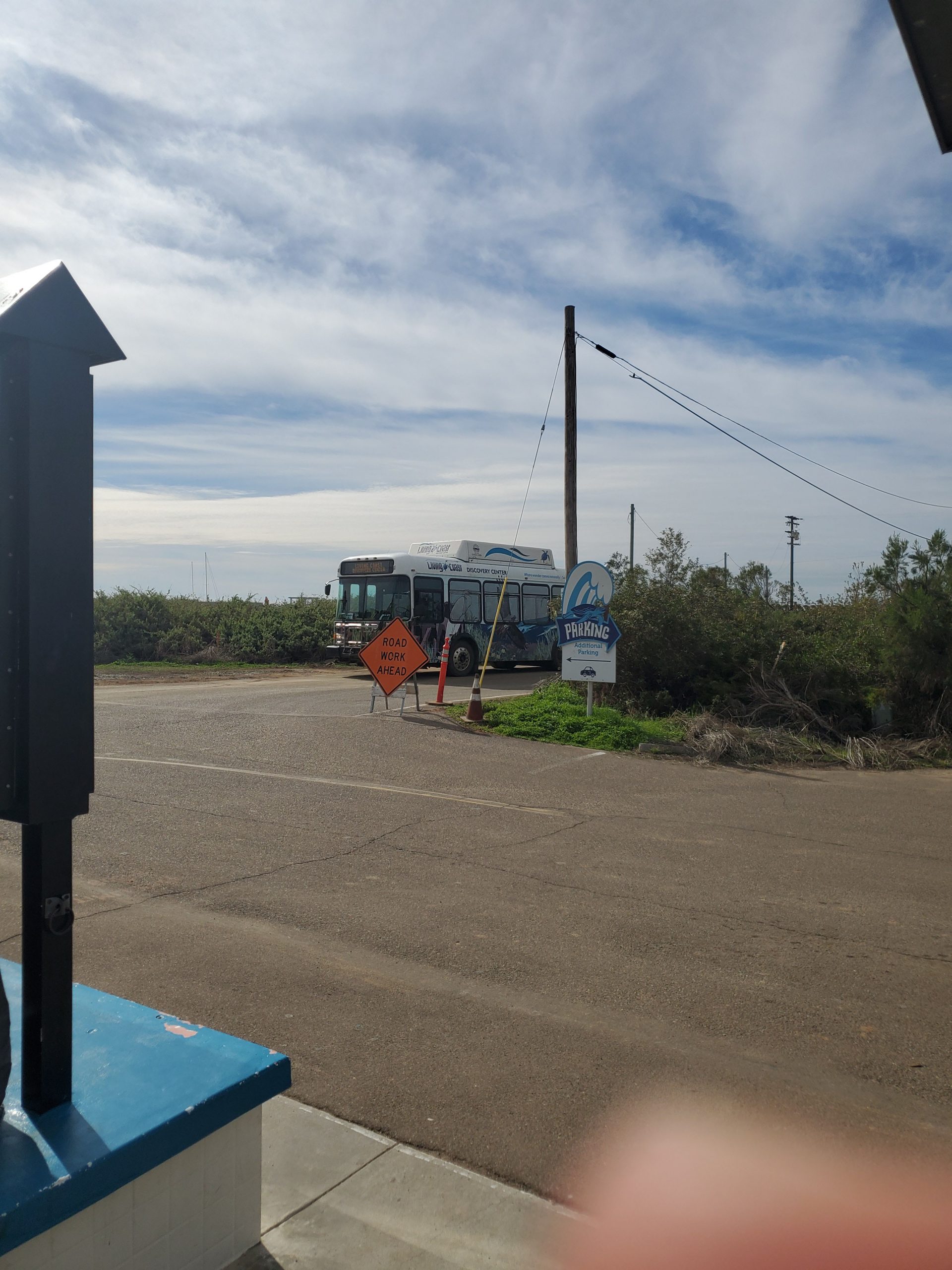
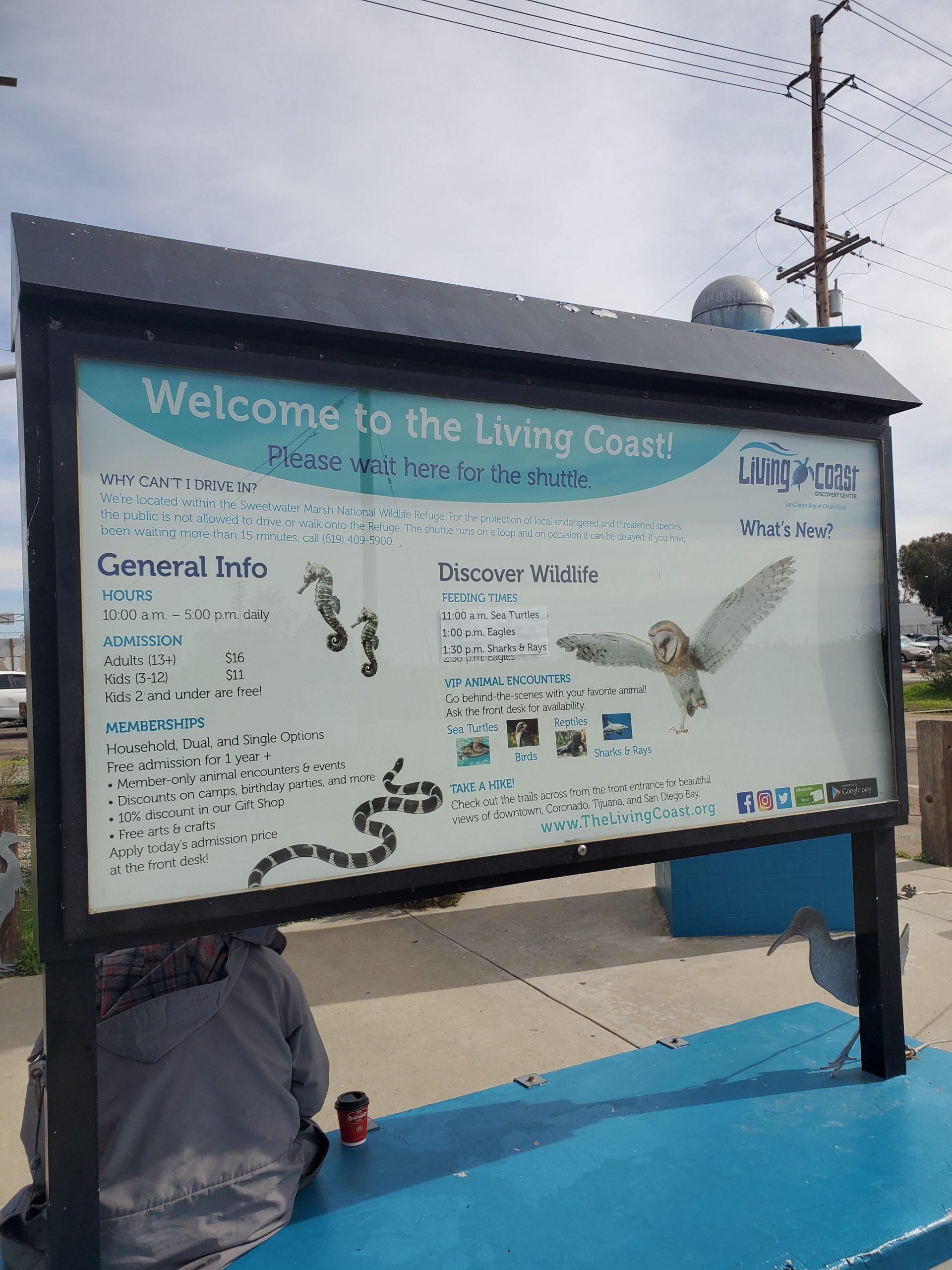
The center is a short distance about 1 mile down Gunpowder Dr, named for the World War I gunpowder plant. You pay admission right inside the center.
The cost is $16 for adults and $11 for children 12 and younger (2 and under is free). The tickets include all activities and the regularly scheduled animal feedings.
There are some add-on animal encounters. These generally cost $60 to $85 and are designed for groups of up to 6 people. The center is very popular for school groups and our kids of been on several field trips that have detailed encounters.
The Living Coast Discovery Center is perfect for using with the Go San Diego Pass. If you are in San Diego for 3 or more days you may want to consider a Go San Diego Pass which includes the discovery center along with most all of San Diego’s big ticket attractions (Zoo, Balaboa Park Museums, Legoland. etc). The Go San Diego Pass allows visitors access to up to 40 attractions for either 1,2,3,5 or 7 days. This is not a cheap option and we generally recommend it for 3 days or more where it is $209 adults/$189 children age 3 to 12.
The Go San Diego Pass option we recommend to visitors just in town for a day or two is the build your own pass. With the build your own pass you add 2 or more attractions to the pass and save 20% off the gate price for each attraction.
Go San Diego: Your Personalized Pass to San Diego
Even as San Diego residents we actually use the build your own pass option when visiting places like the Living Coast Discovery Center. You have 30 days to visit the attractions so it is perfect for residents who want to visit two or more attractions within a month.
You can go here for more information about the Go San Diego Pass.
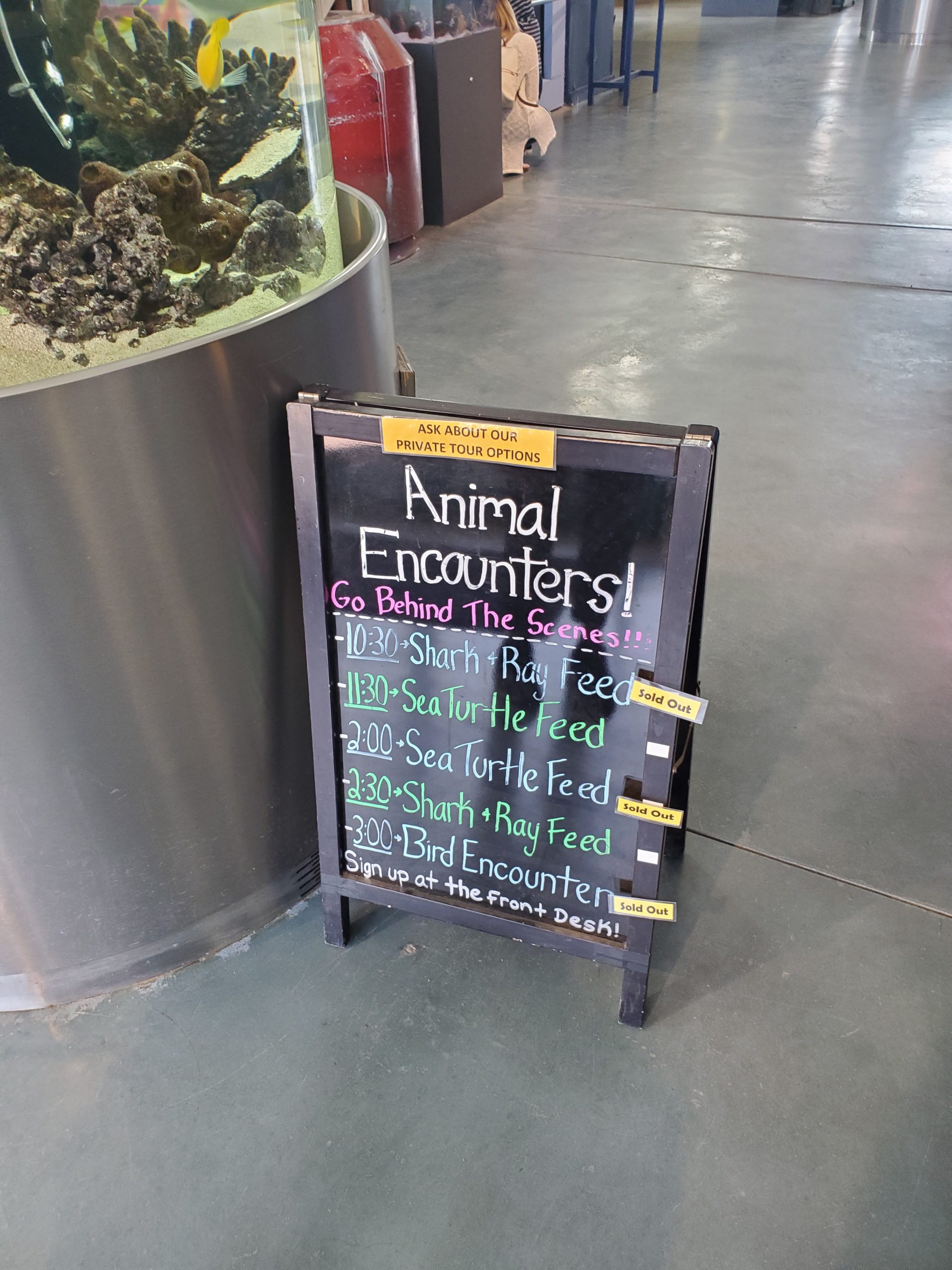
Events and Feedings
The Living Coast Discovery Center hosts all kinds of events throughout the year.
Every day there are feedings of the animals. You can check here for the schedule.
The current schedule of animal feedings has been
- 11 am Sea Turtle Feeding
- 1 pm Golden and Bald Eagle Feeding
- 1:30 pm Shark and Ray Feeding
On Sunday afternoons there are composting workshops at the center’s composting exhibit. This is free with admission.
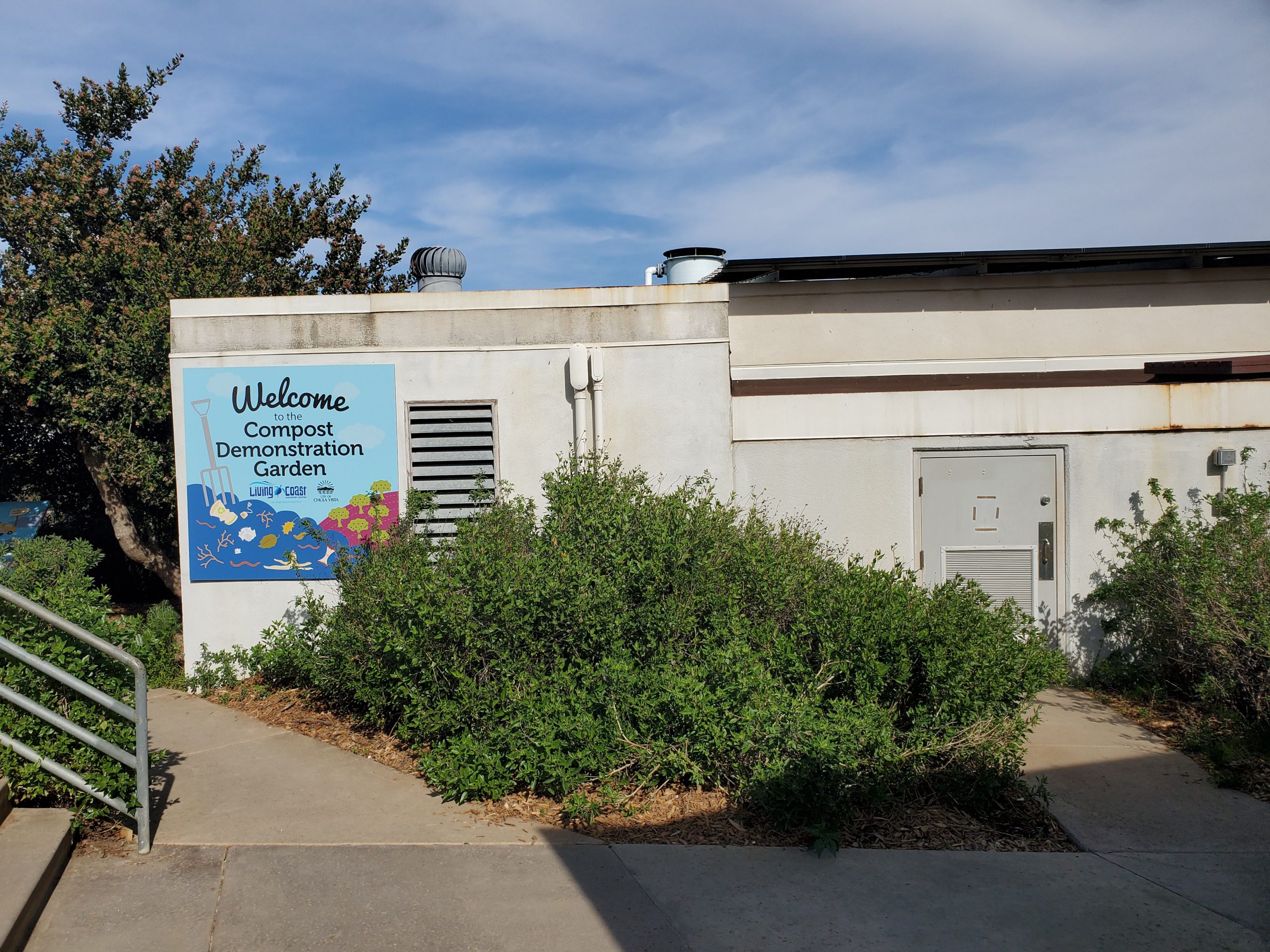
There are also regularly scheduled guided tours and bird walks. Most of these take place on the weekend. During the week, the center is hot to many school groups. However, even on weekends the center is never that crowded.
In 2020 we have started to take advantage of the Trail to Bay Challenge. This challenge is modeled after the 5-Peak Challenge in Mission Trails Park. It consists of regular weekend hikes and cleanup projects focused not only on the immediate bay area, but the larger inland Chula Vista community.
The hikes are free to attend. You receive a punch card and if you complete 3 hikes and 1 cleanup you get a family 4-pack ticket to the center as well as first-aid kit.
We will be adding these hikes as we go. Many of these hikes are along areas of the Sweetwater River Watershed. This river runs from high in the San Diego mountains to where it ends at the San Diego Bay by the discovery center.
Exhibits
The exhibits at Living Coast Discovery Center are spread out over several indoor and outdoor areas. There are some walking trails, but the exhibits are all within a small area. The entire area has full accessibility. Even the observation tower is reached via a ramp.
We have focused mainly on pictures to describe what you will see.
Turtle Lagoon
The first exhibit you will see when you are dropped off by the shuttle is the large Turtle Lagoon. This is home to 300 pound+ green sea turtles. Daily feedings are popular, usually in the late morning or early afternoon.
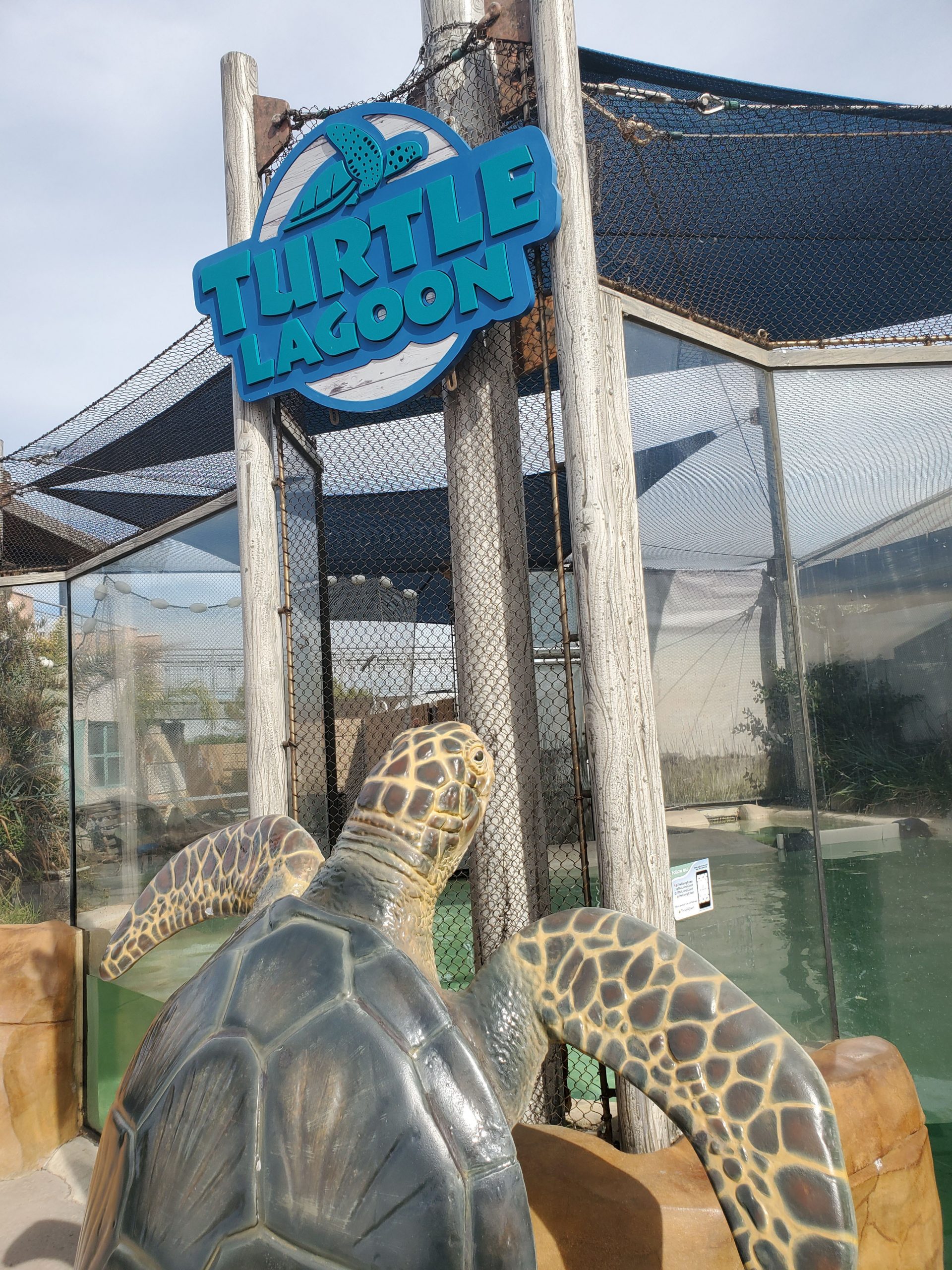

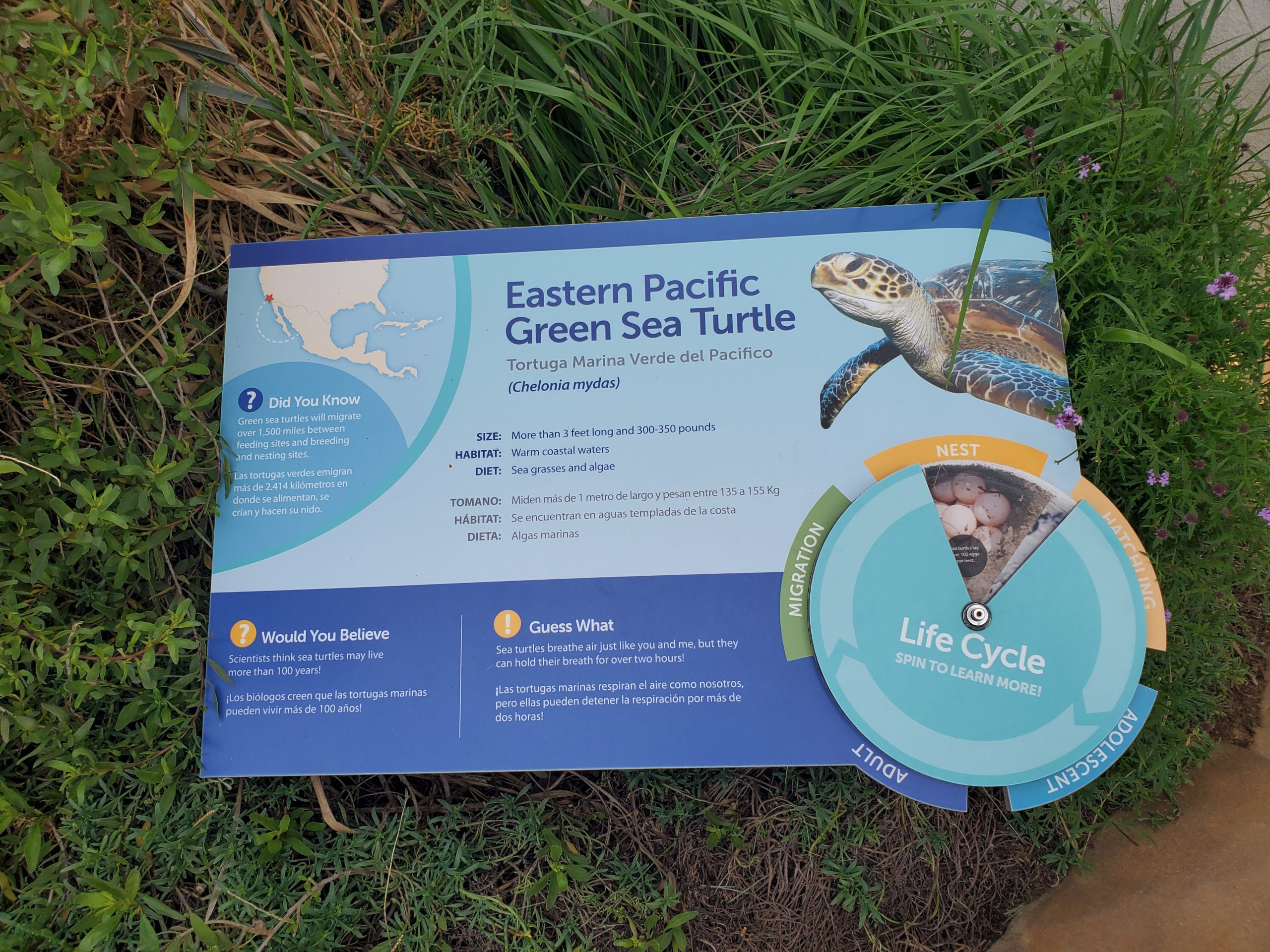
Main Gallery
The main gallery is where you get your tickets. There are over 20 exhibits that include steelhead trout, morey eel, purple sea urchin, seahorses, snakes, lizards, octopus, tarantulas (one was molting on our last visit), jellyfish and more.
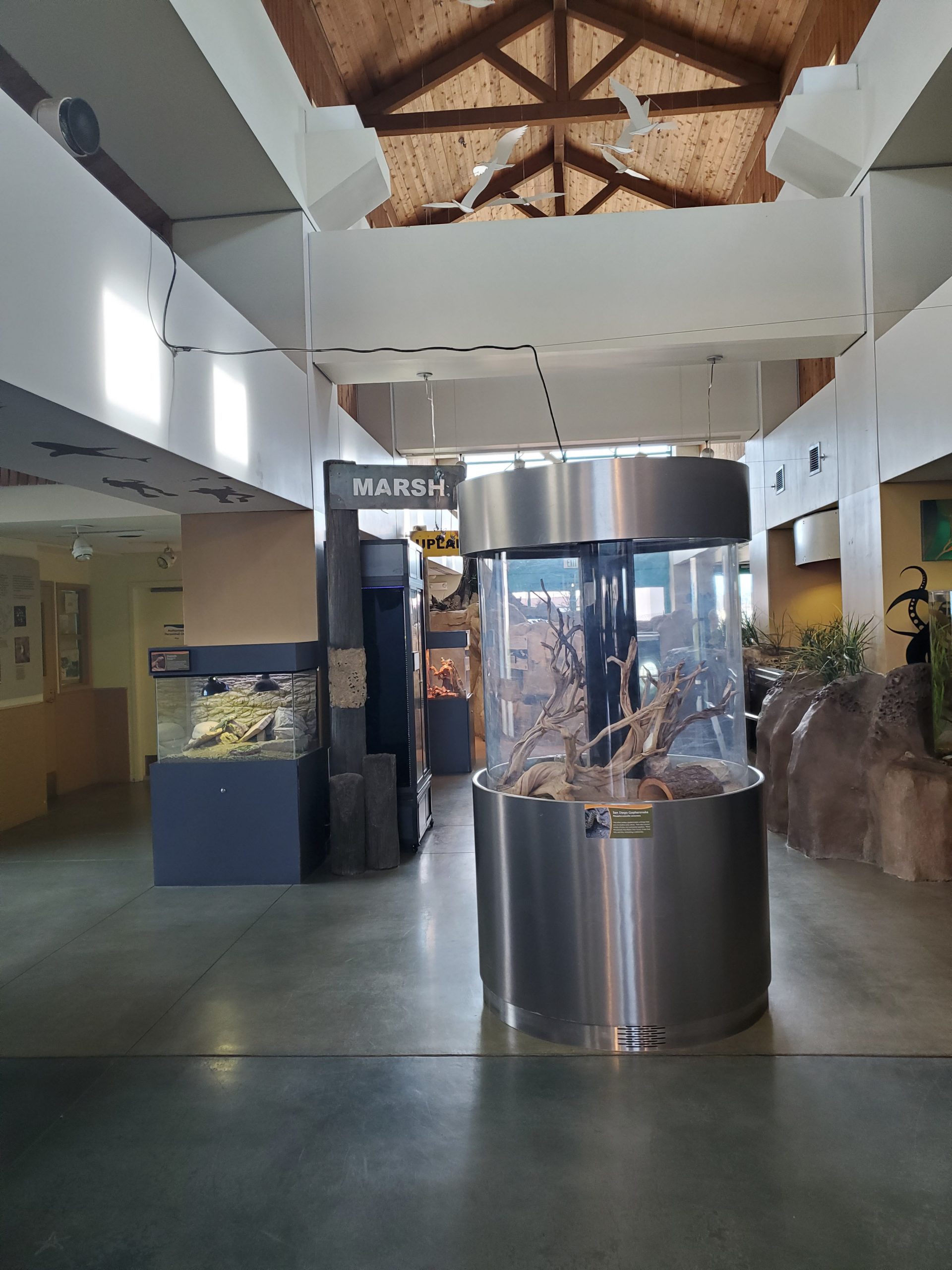
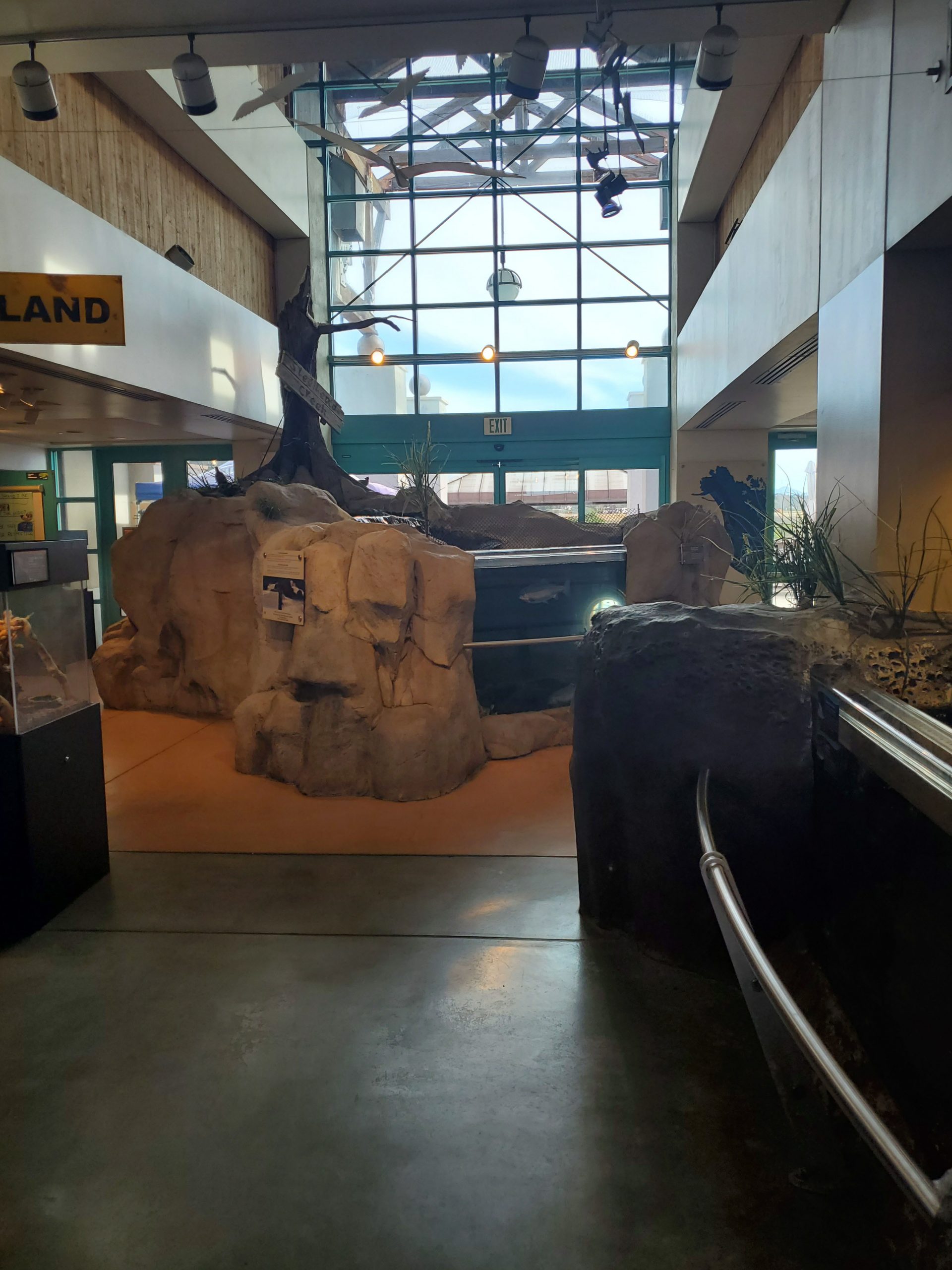
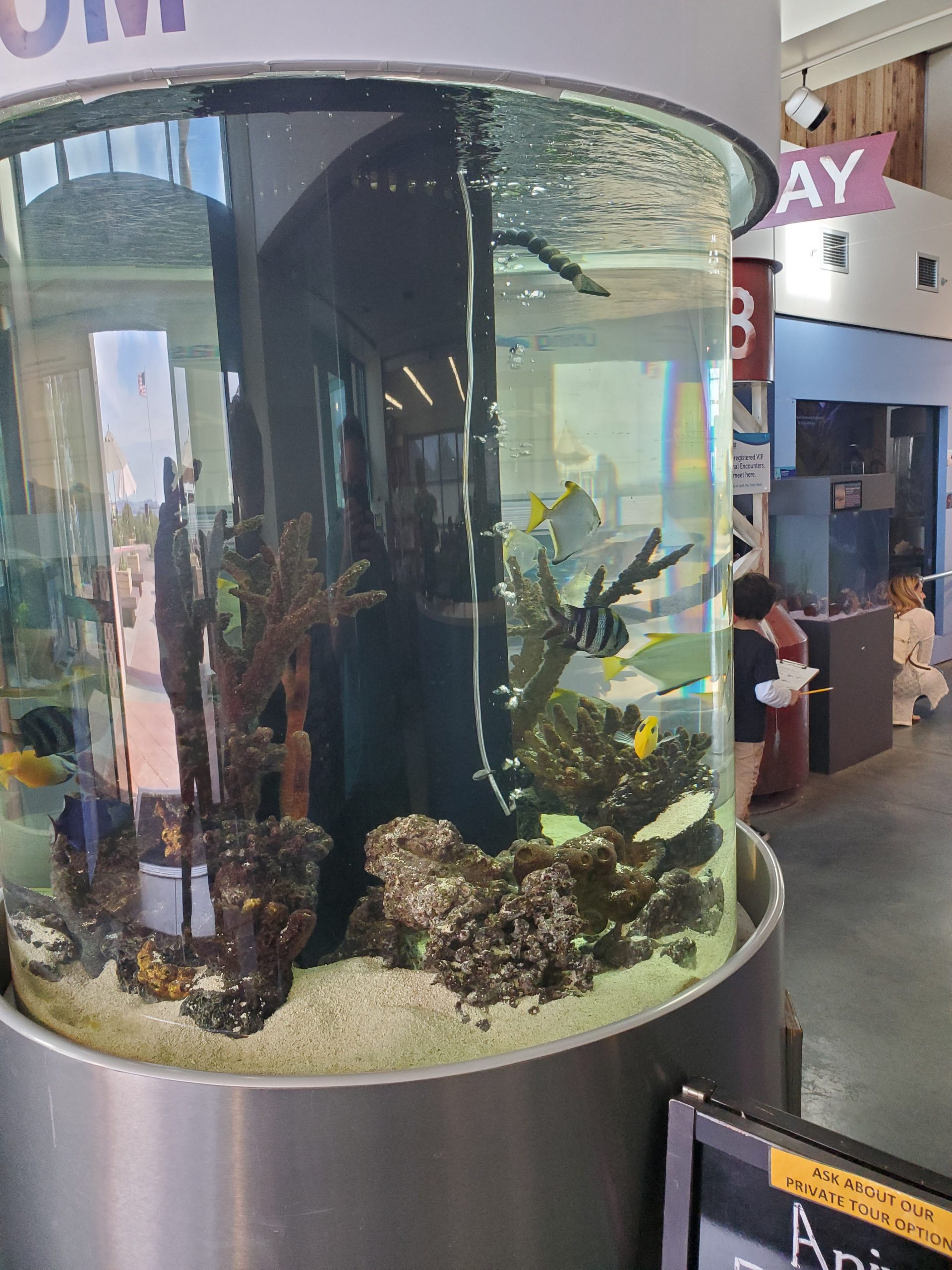
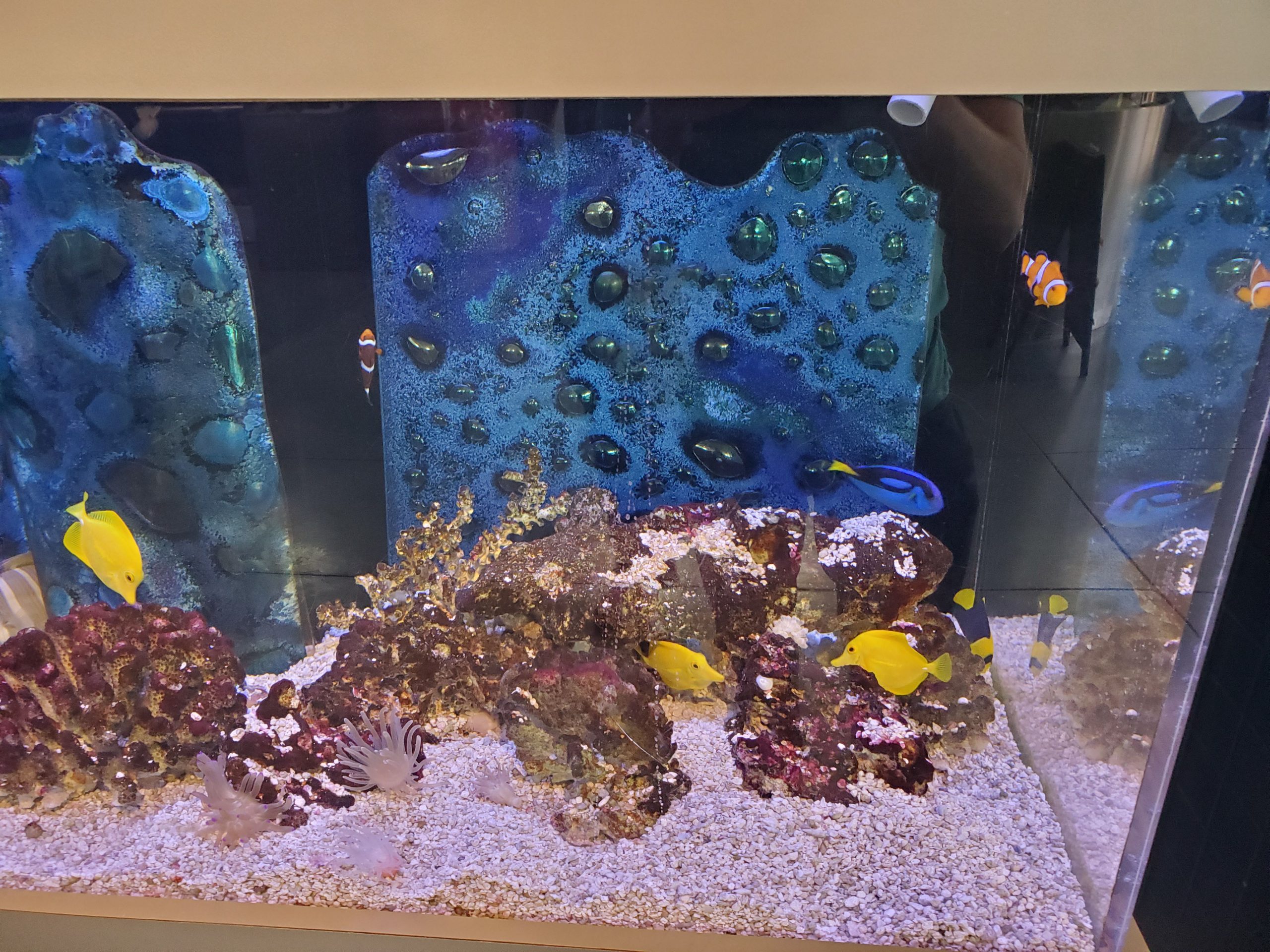
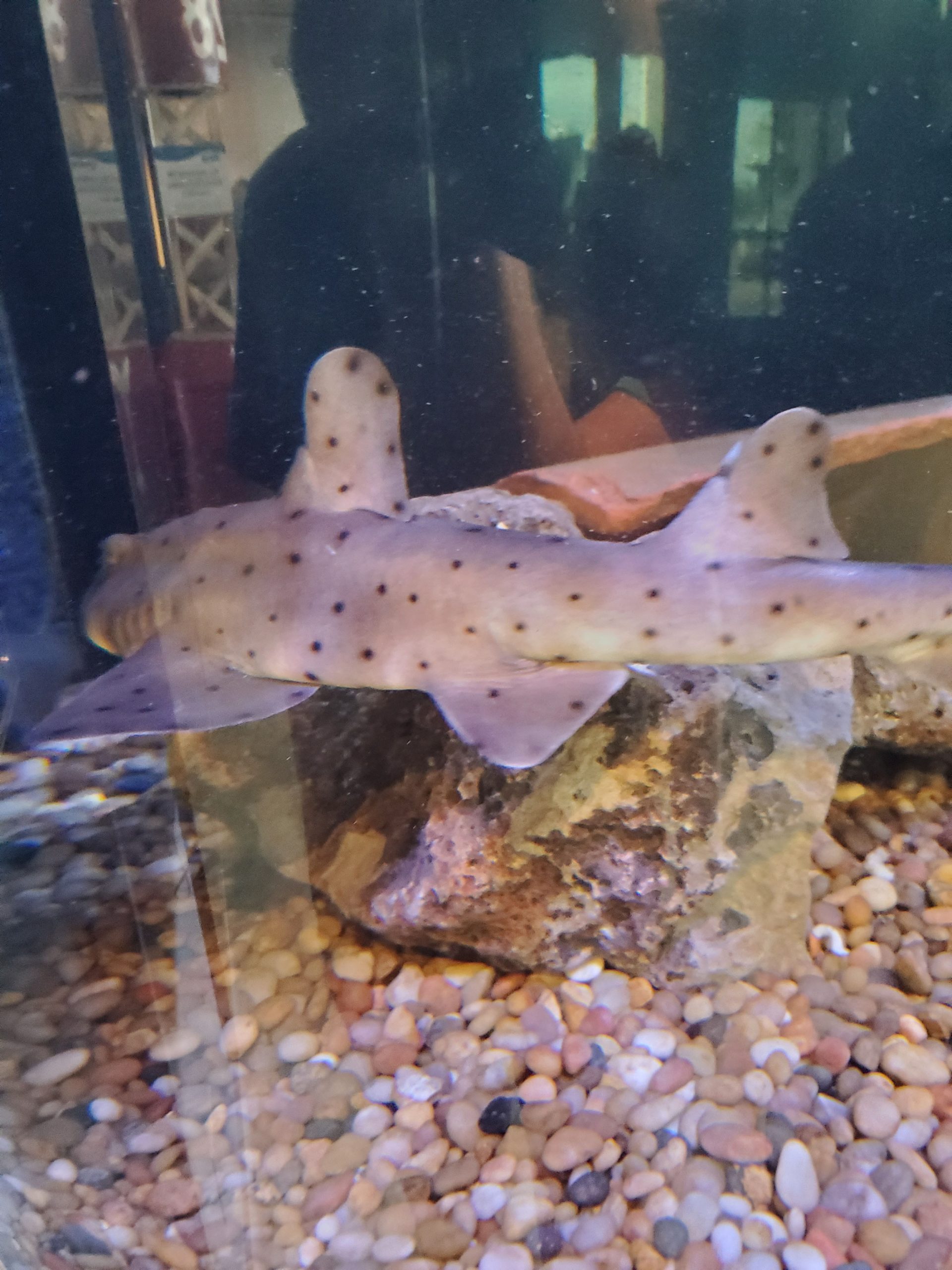
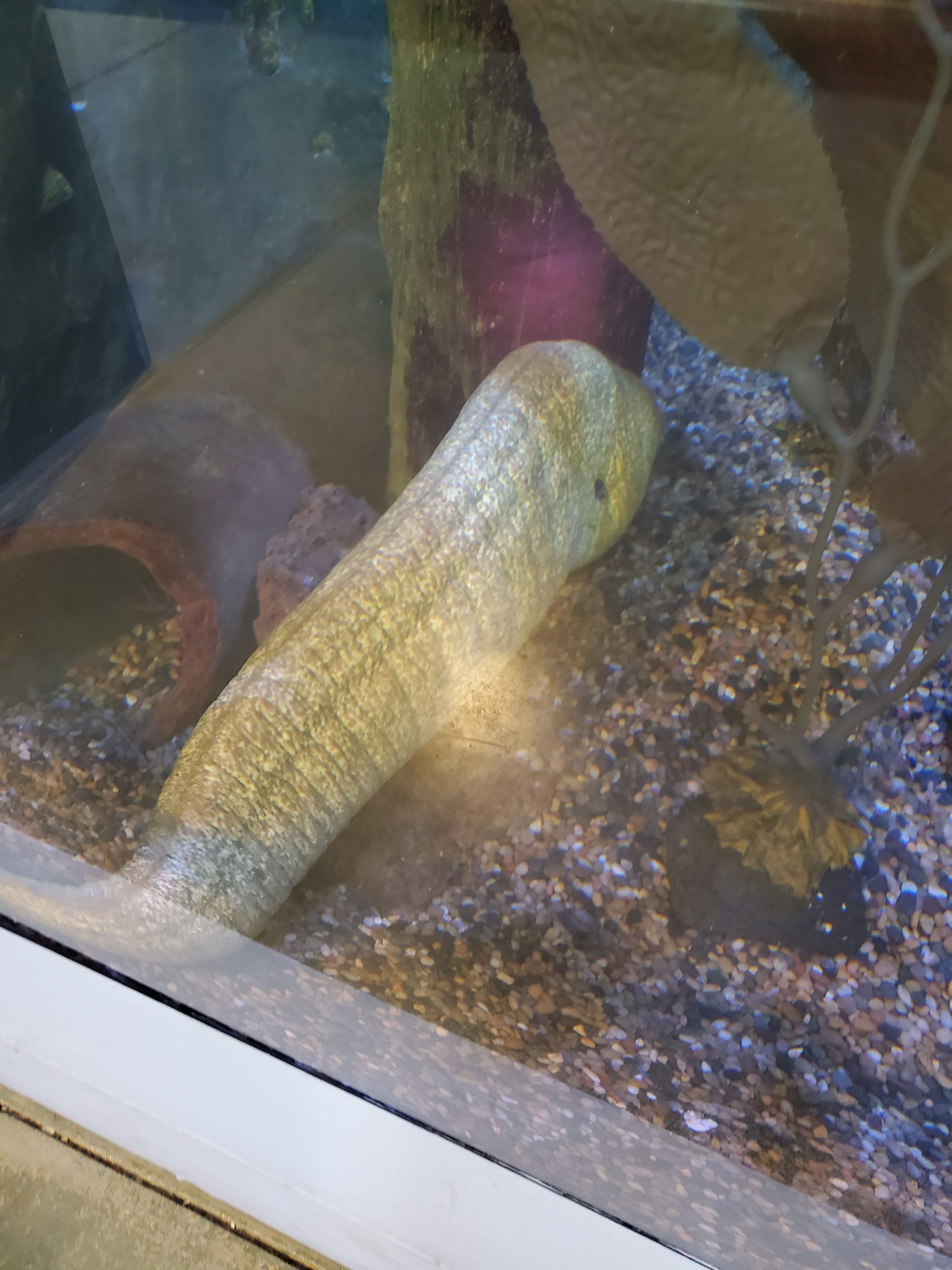

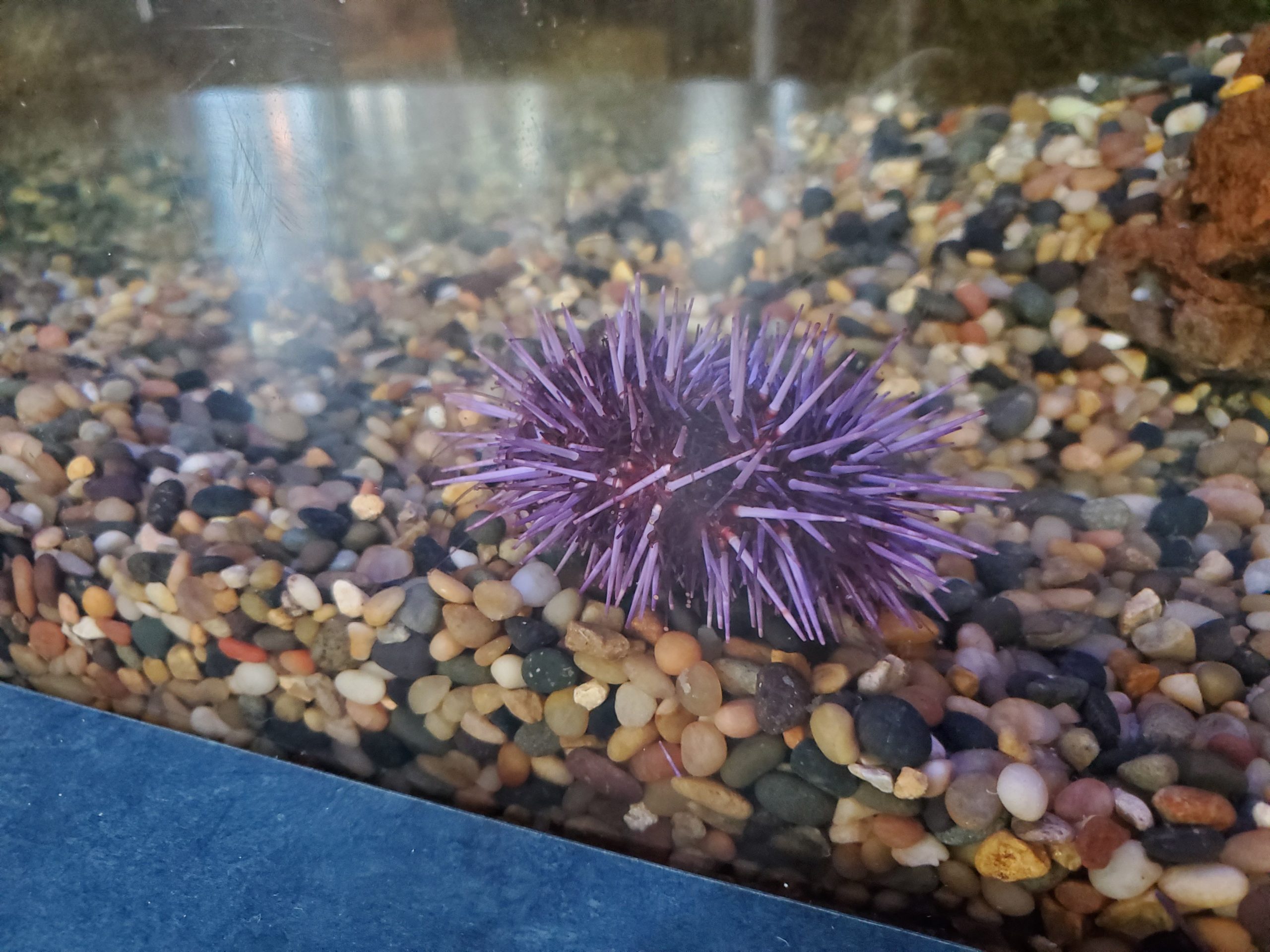
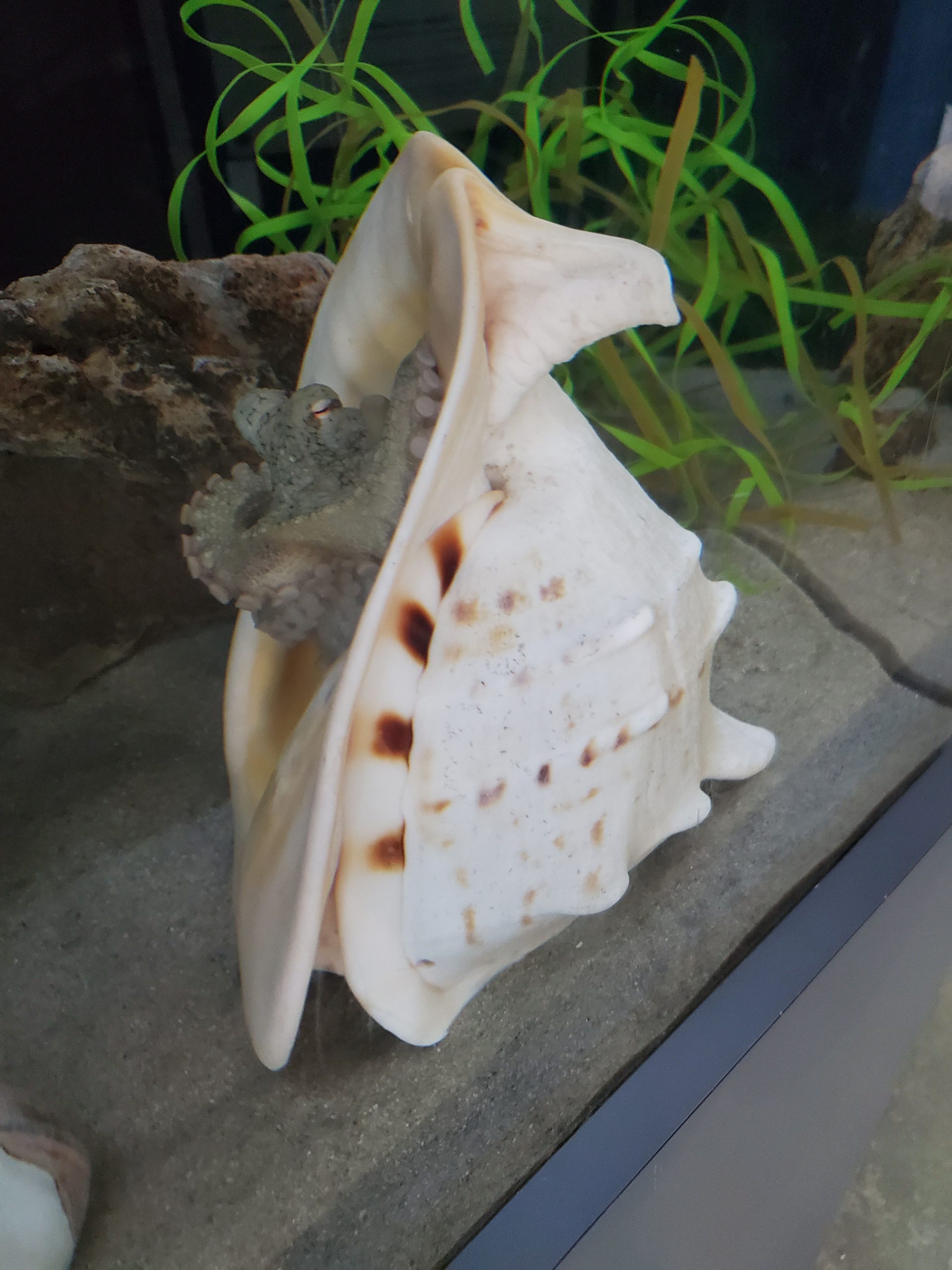
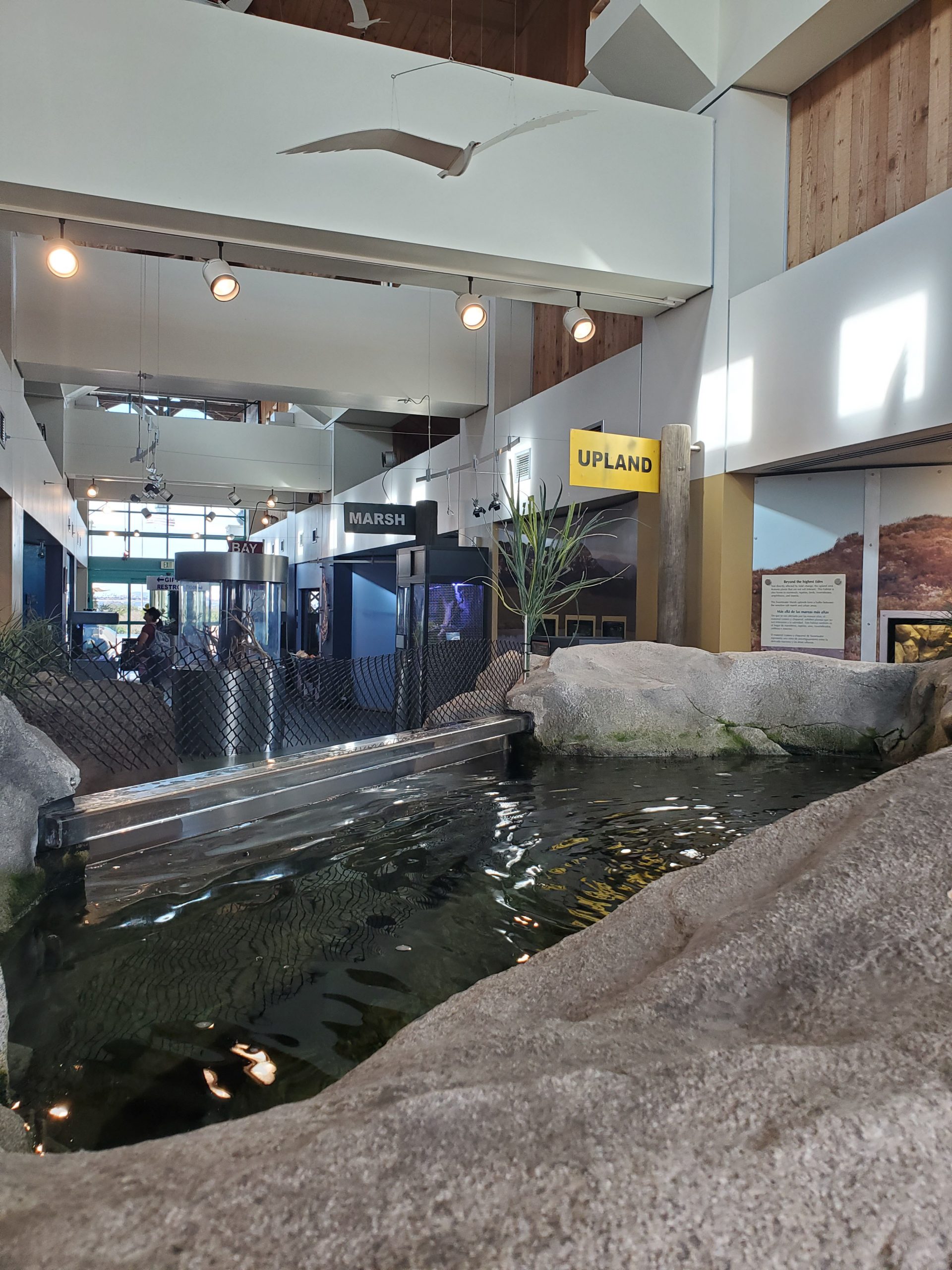
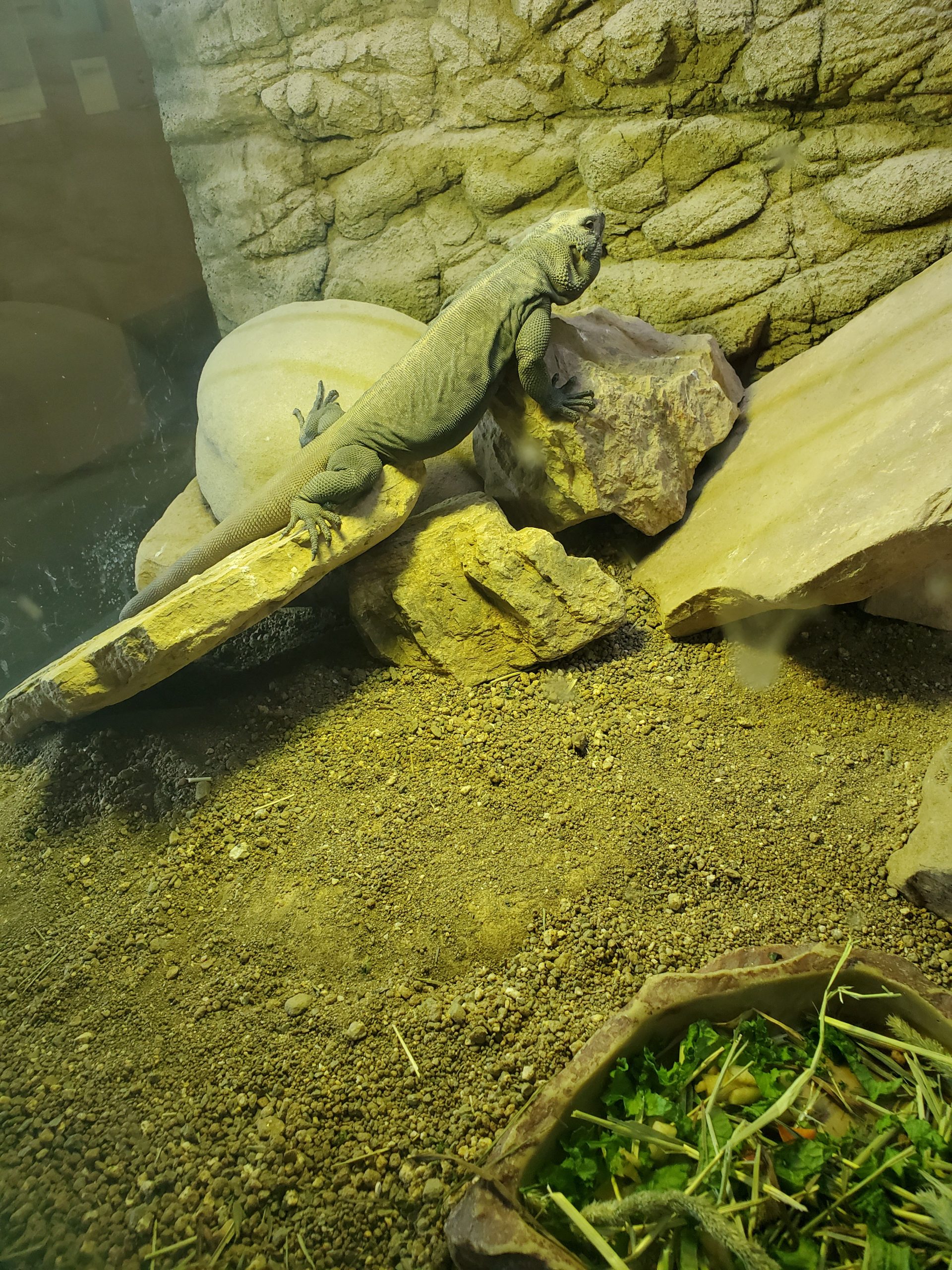
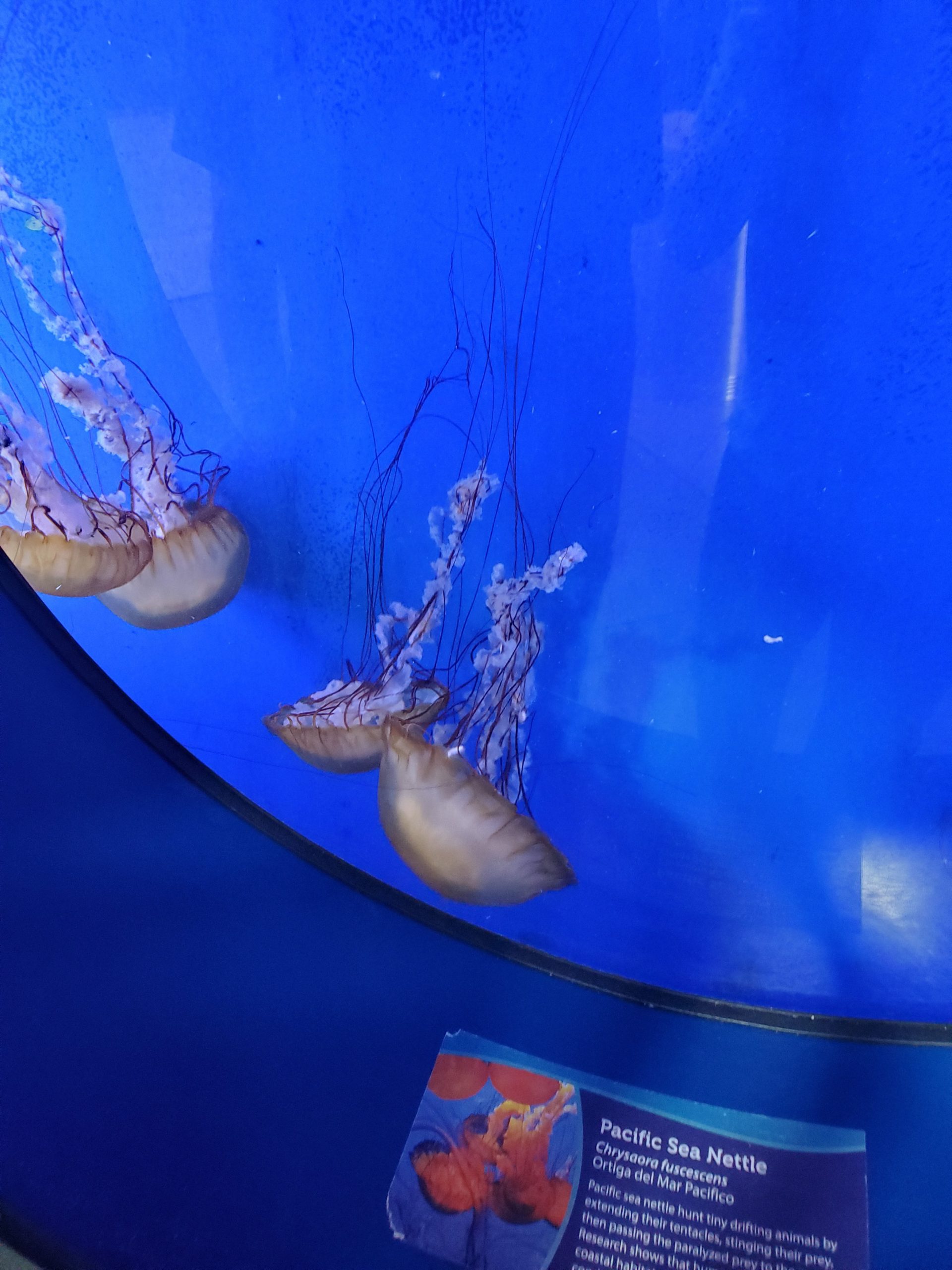
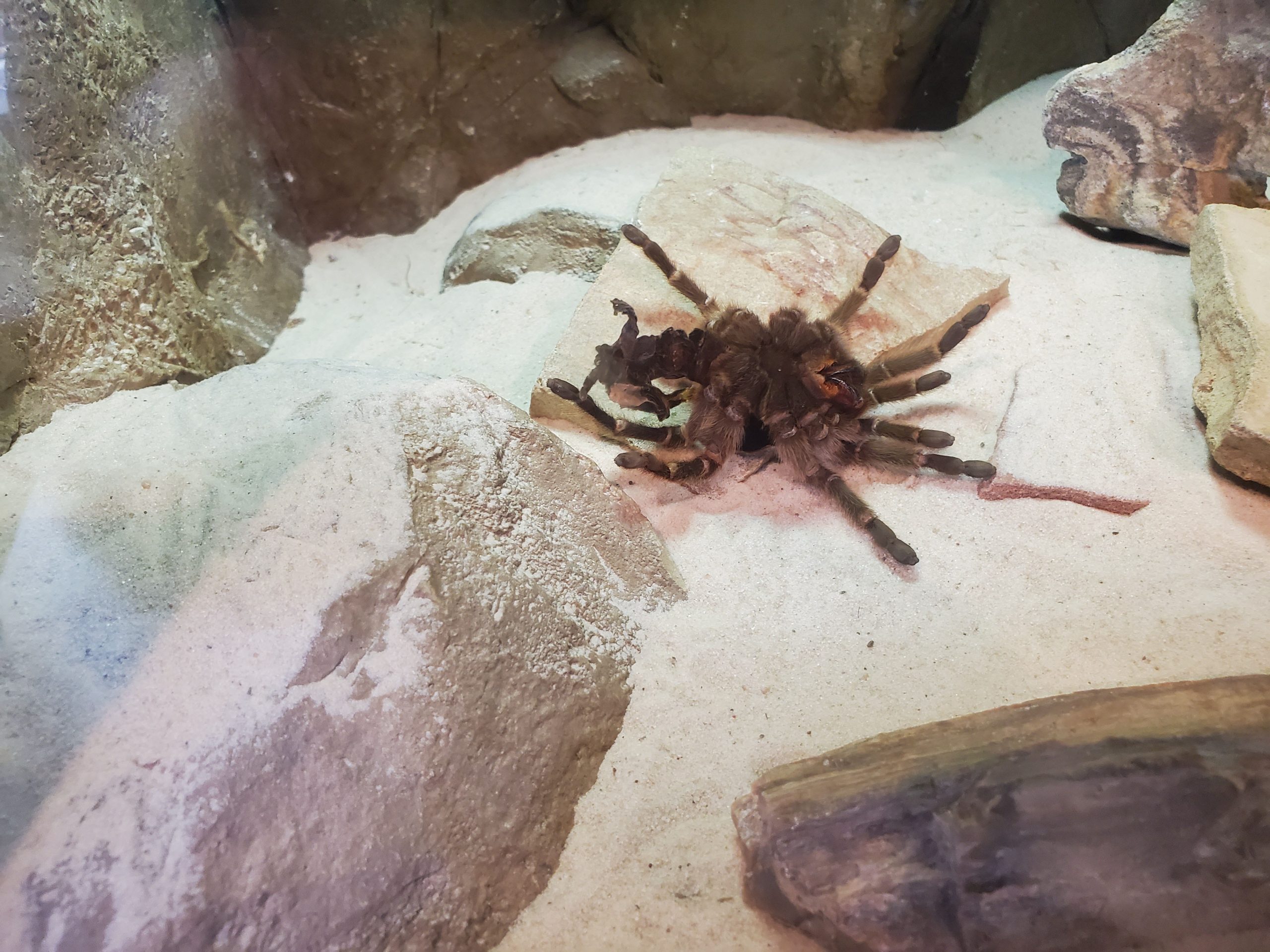
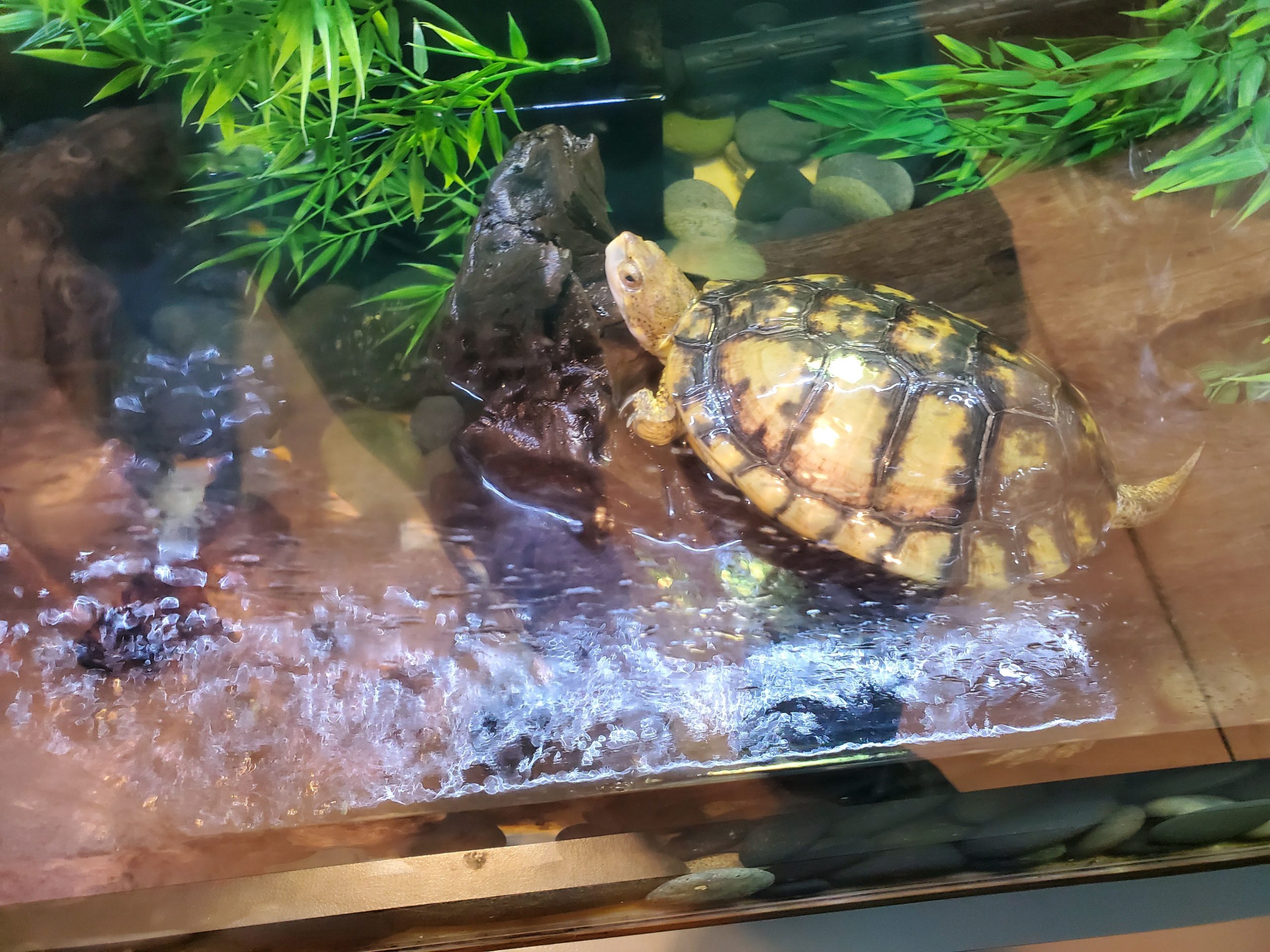
Shark and Ray Encounter
The shark and ray encounter is in a separate building behind the main gallery. You can see local shark and rays. This includes the leopard shark. In late summer, one of our favorite activities is swimming with the leopard sharks off La Jolla Shores (they are harmless). Check for daily feedings.
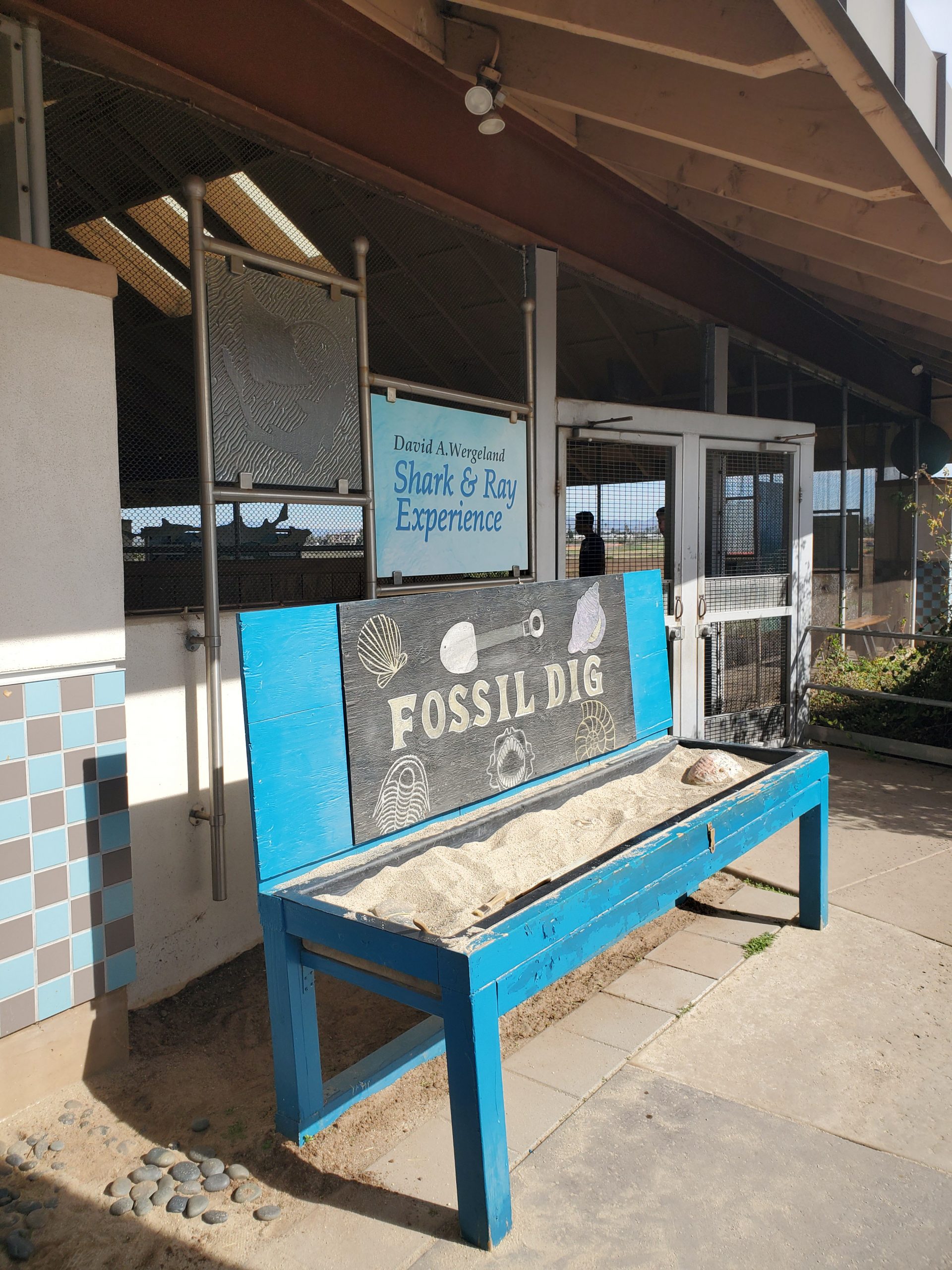

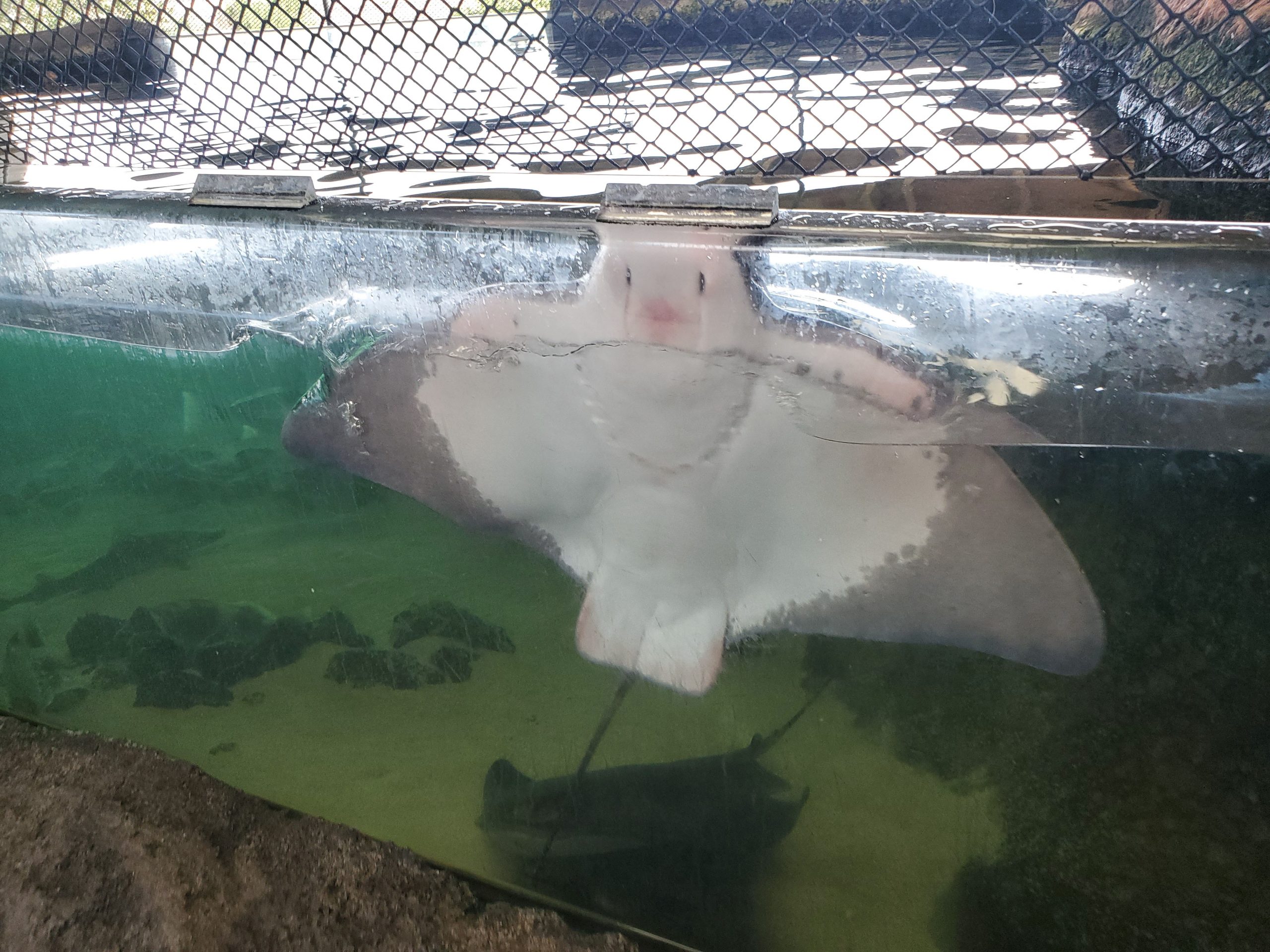
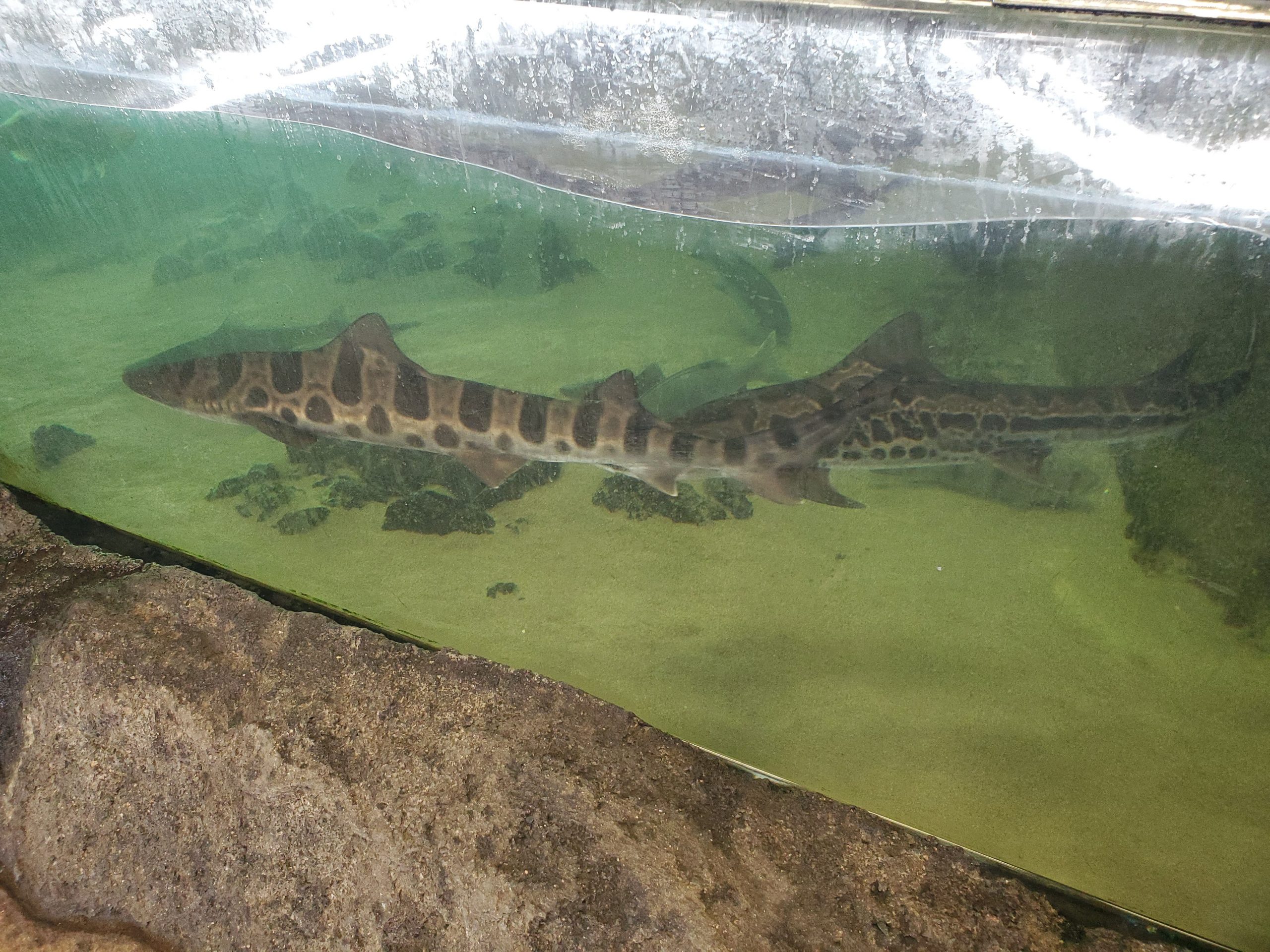
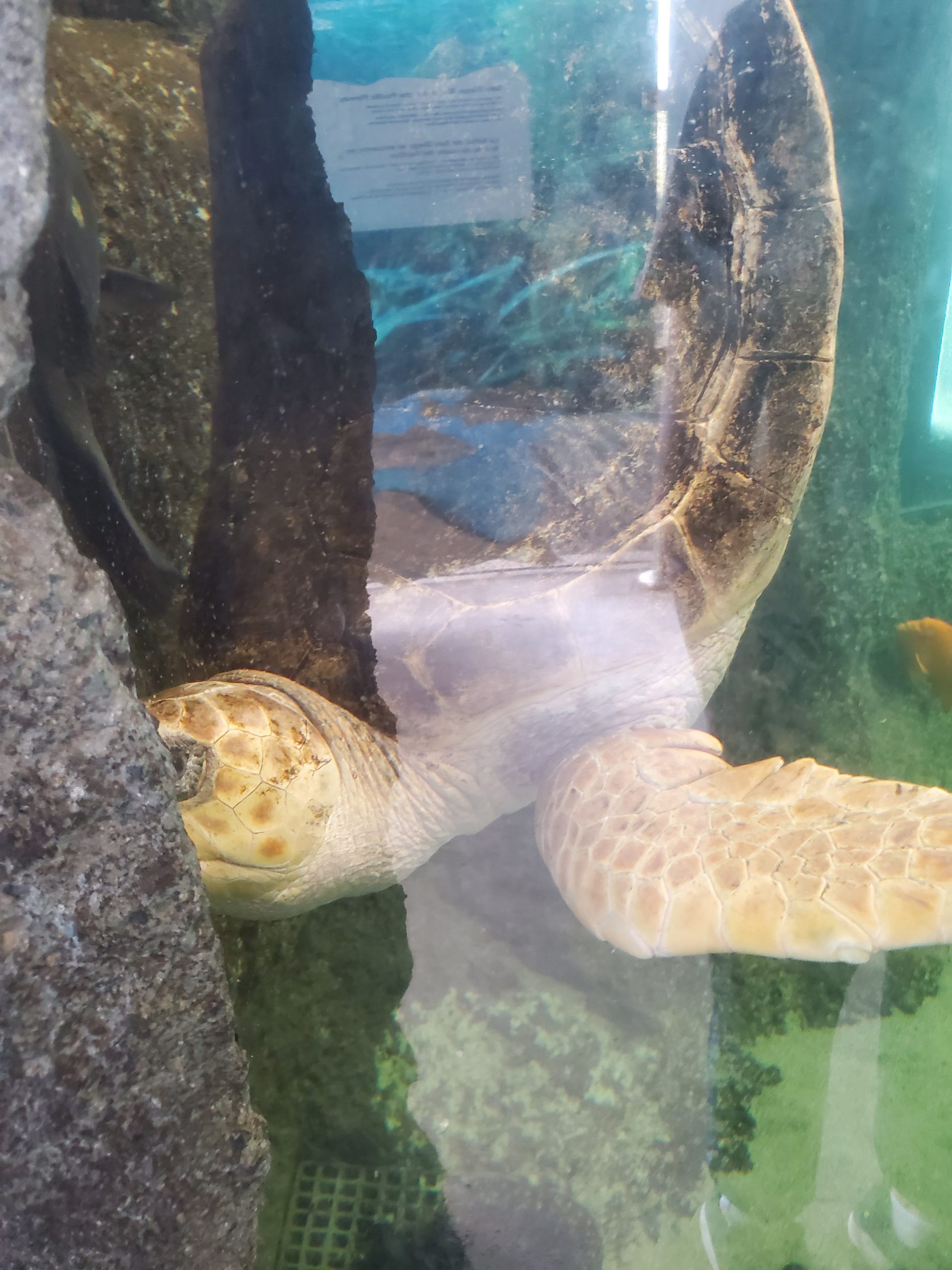
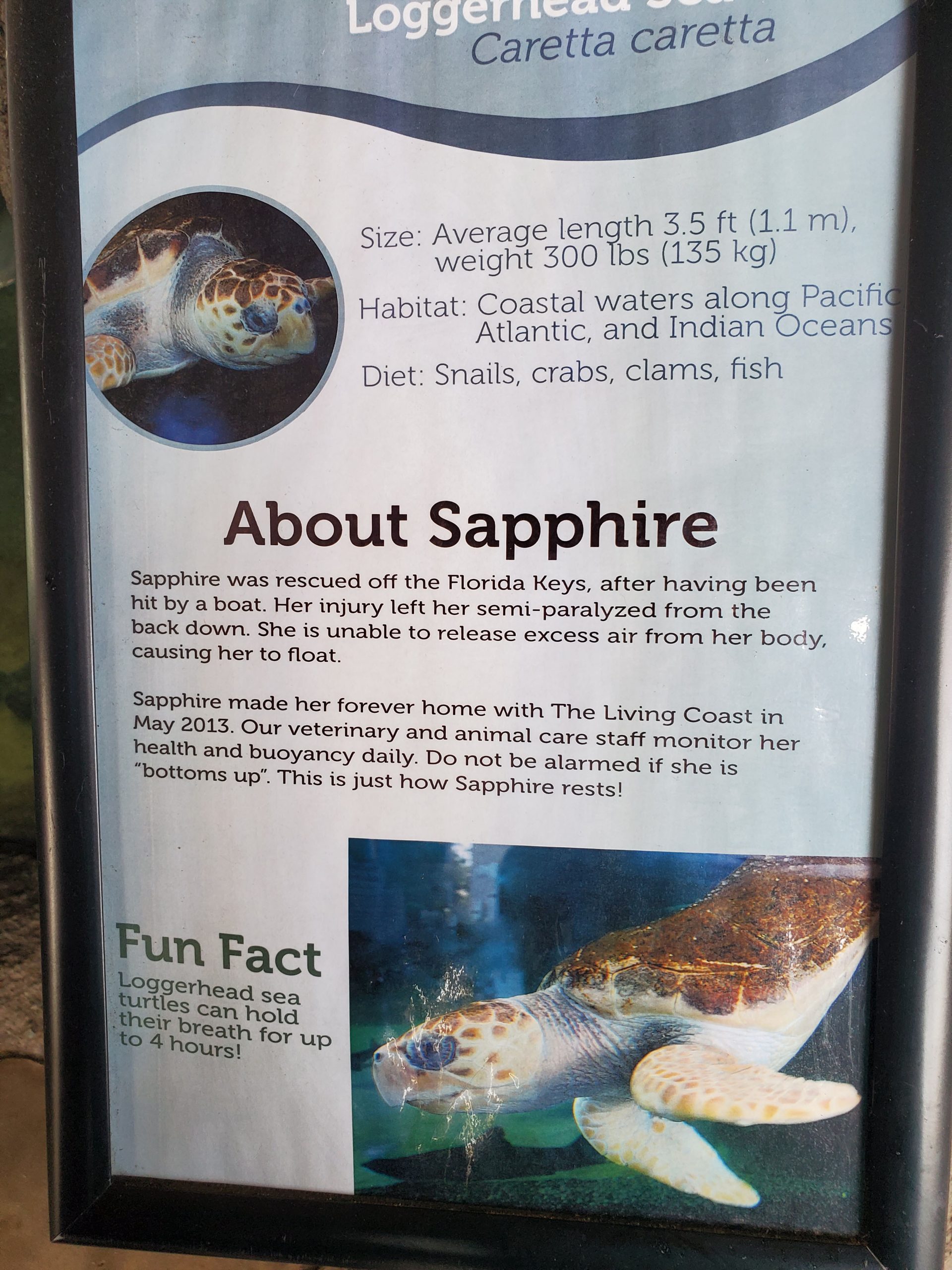
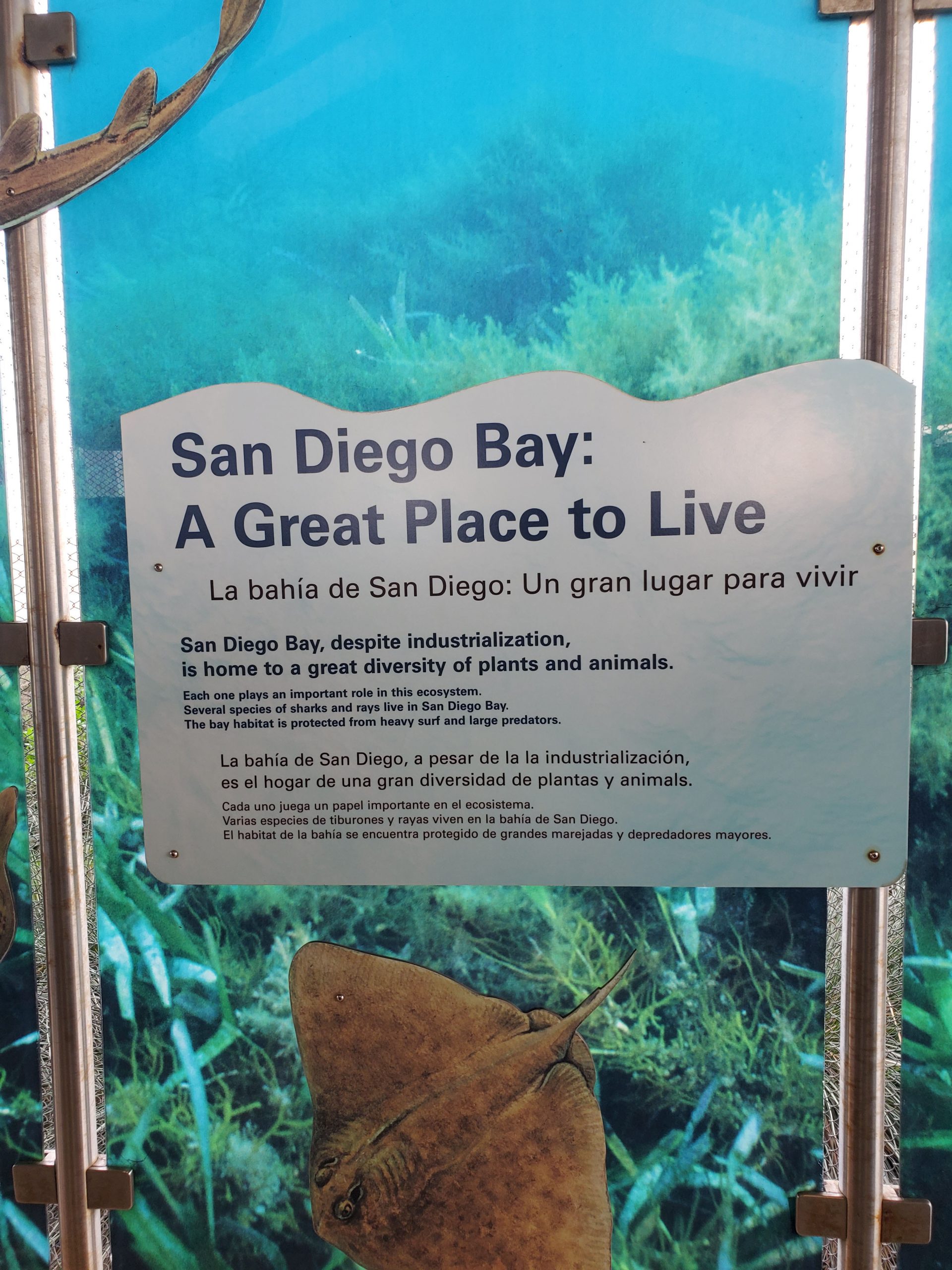
Shorebird Aviary
The shorebird aviary is walk through aviary where you can have close encounters with local birds. This includes the light-footed Ridgways rail clapper bird which has been part of an ongoing rescue program. It appears the official name of this bird is being changed from light-footed Clapper Rails to Ridgways Rail.
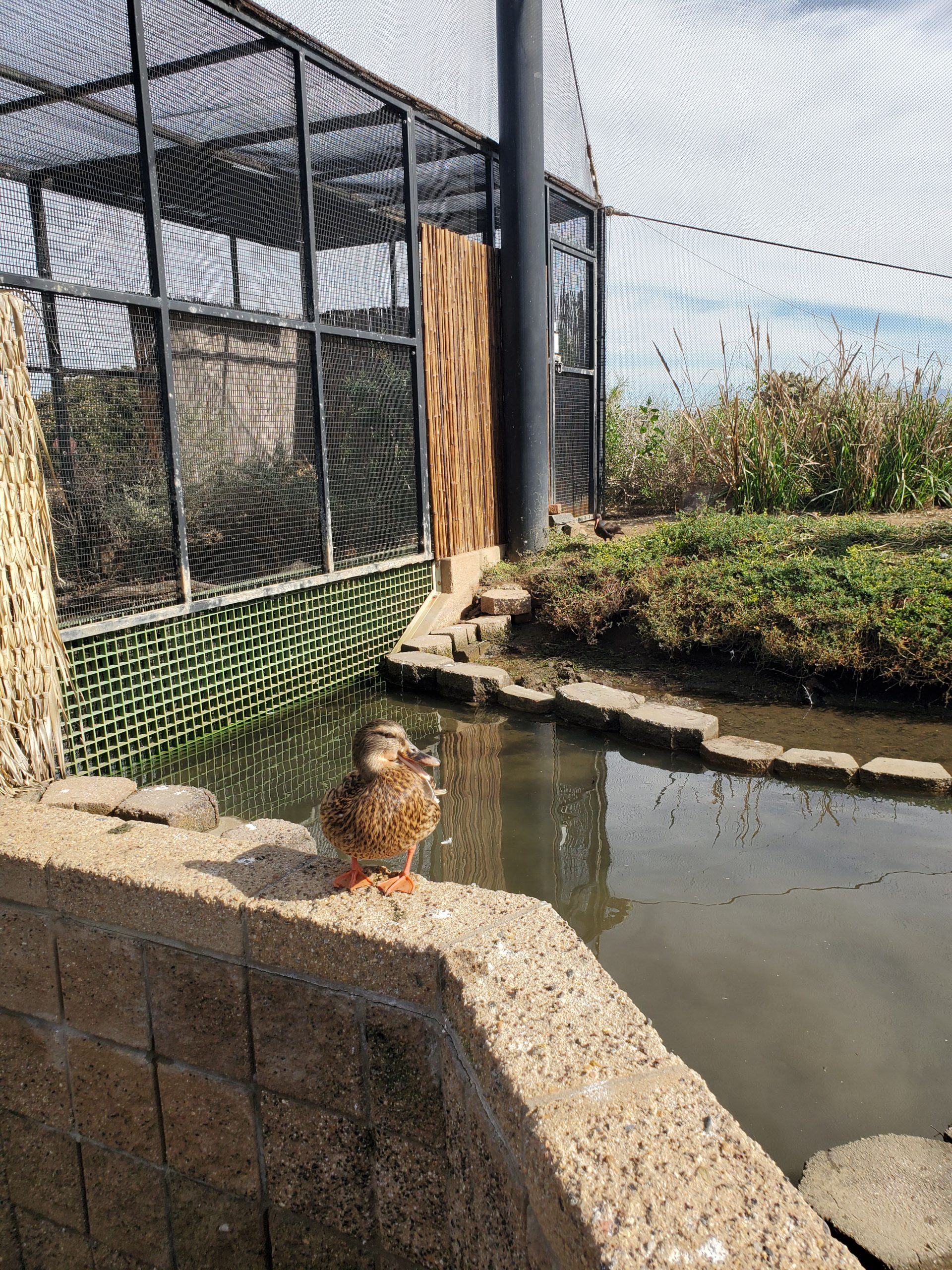
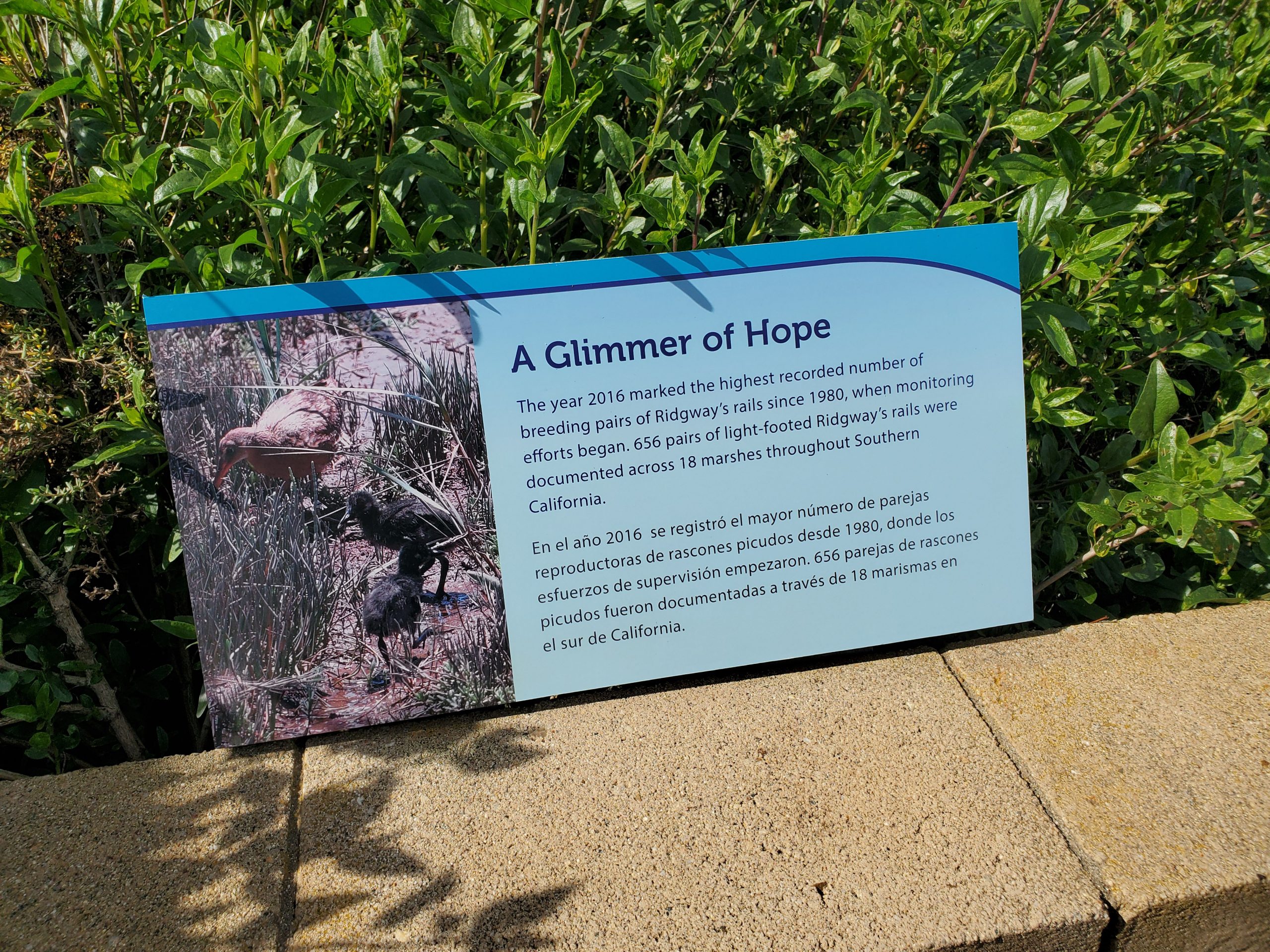
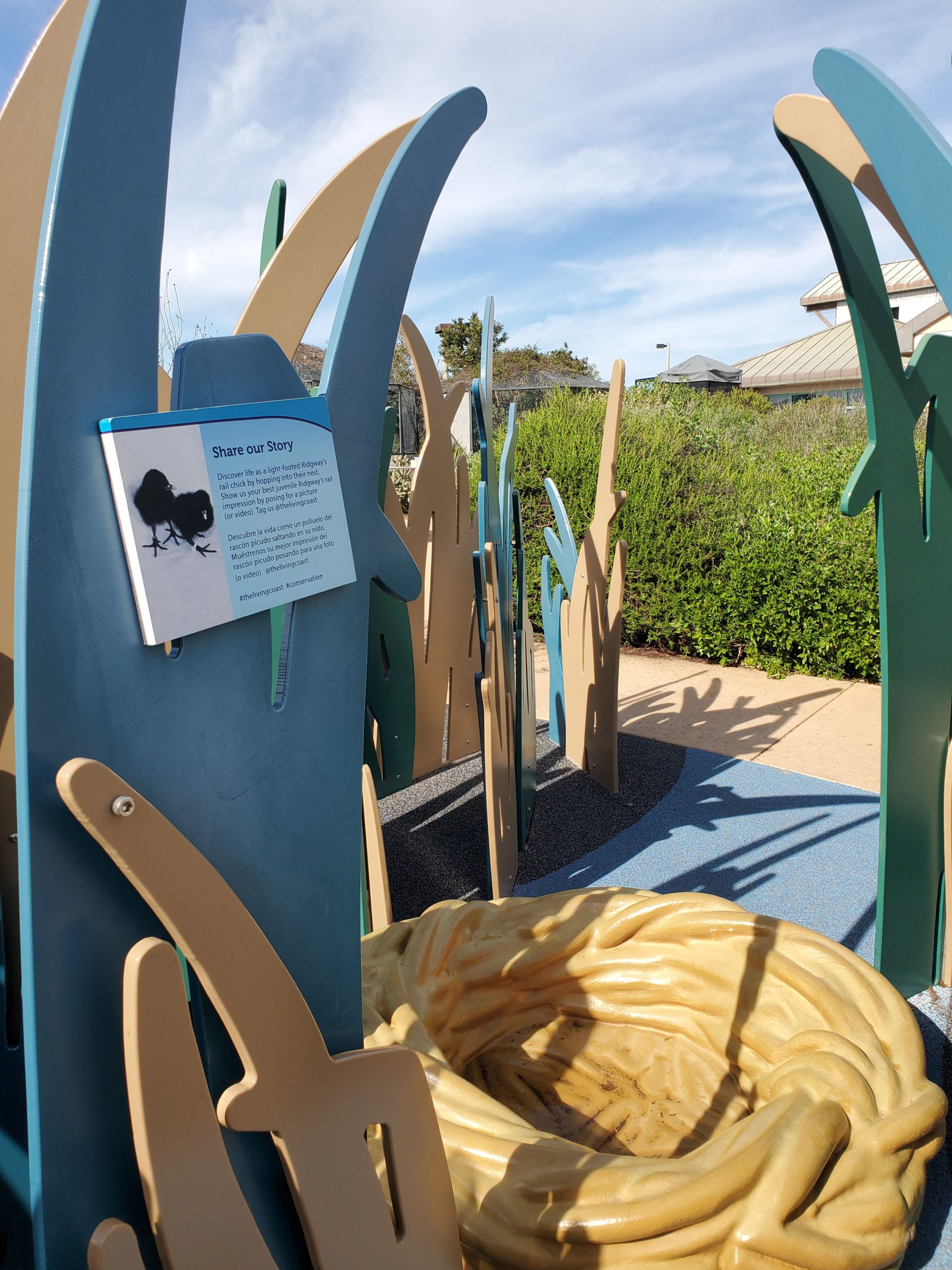
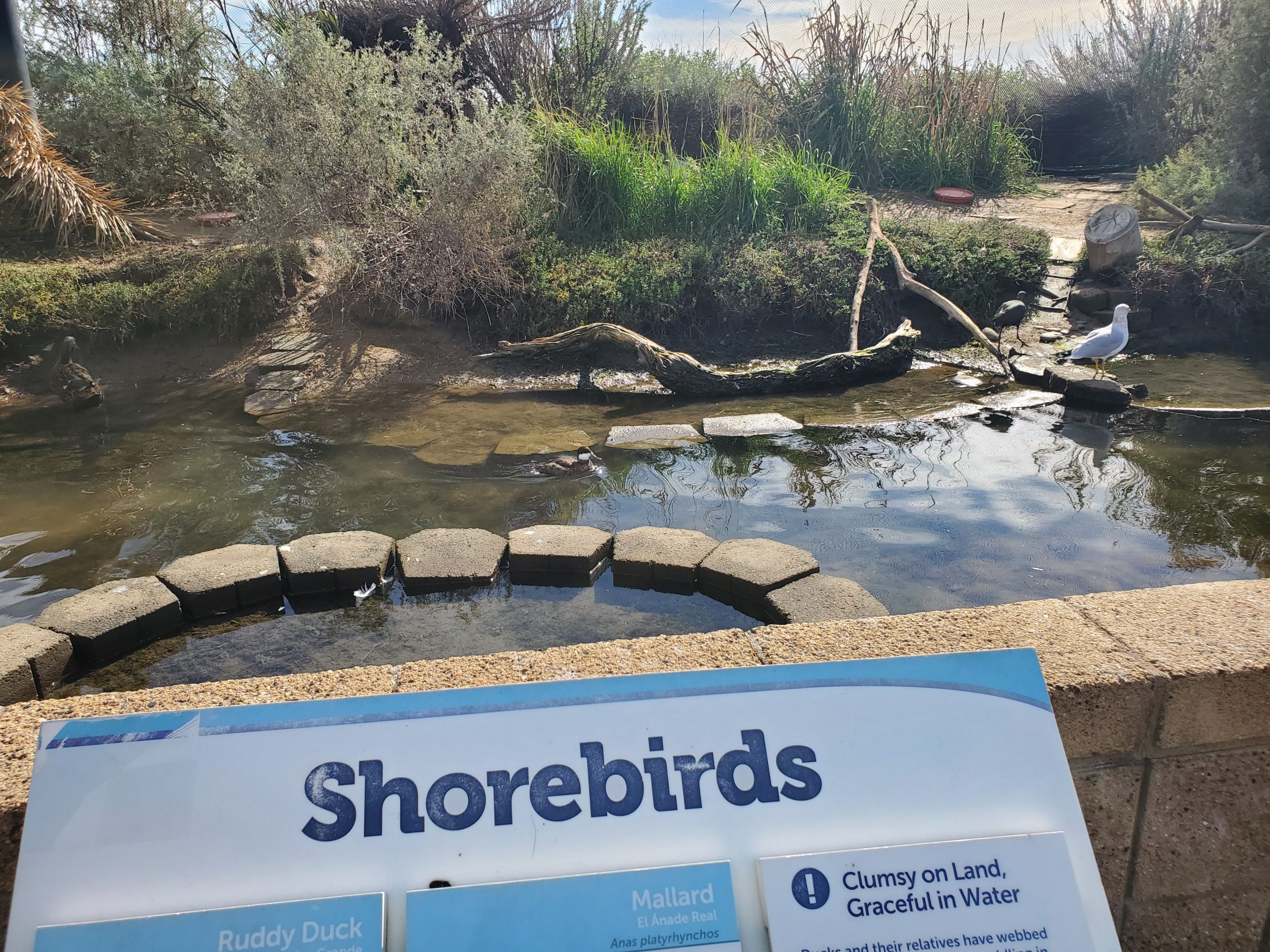
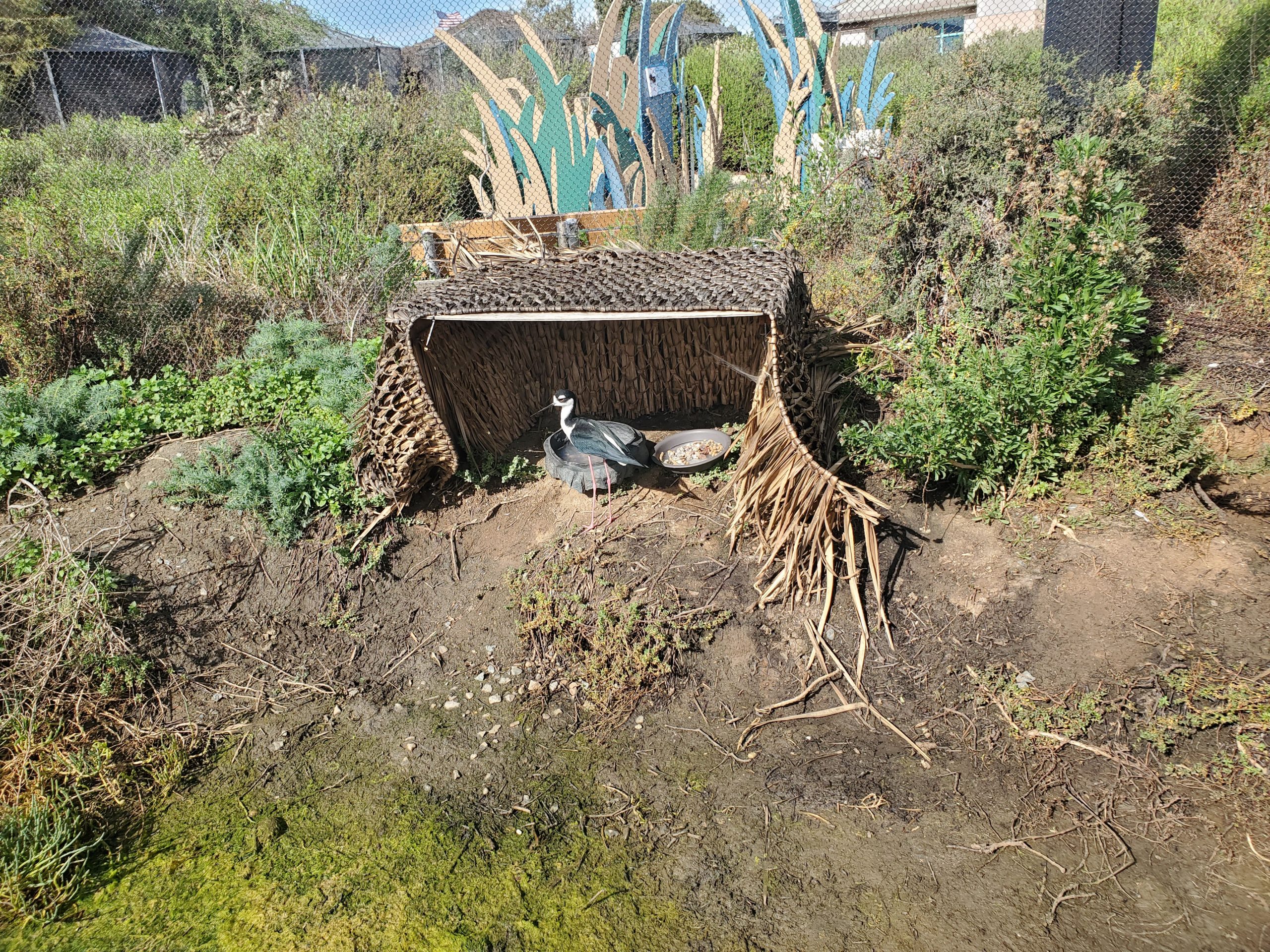
Eagle Mesa and Raptor Row
The outdoor native birds of prey area is always fascinating. All these birds were rescued and rehabilitated. However, they are not able to survive in the wild. There are daily feedings but sometimes you can see the birds munching on a snack. For example, on our last visit an owl was enjoying a mouse.
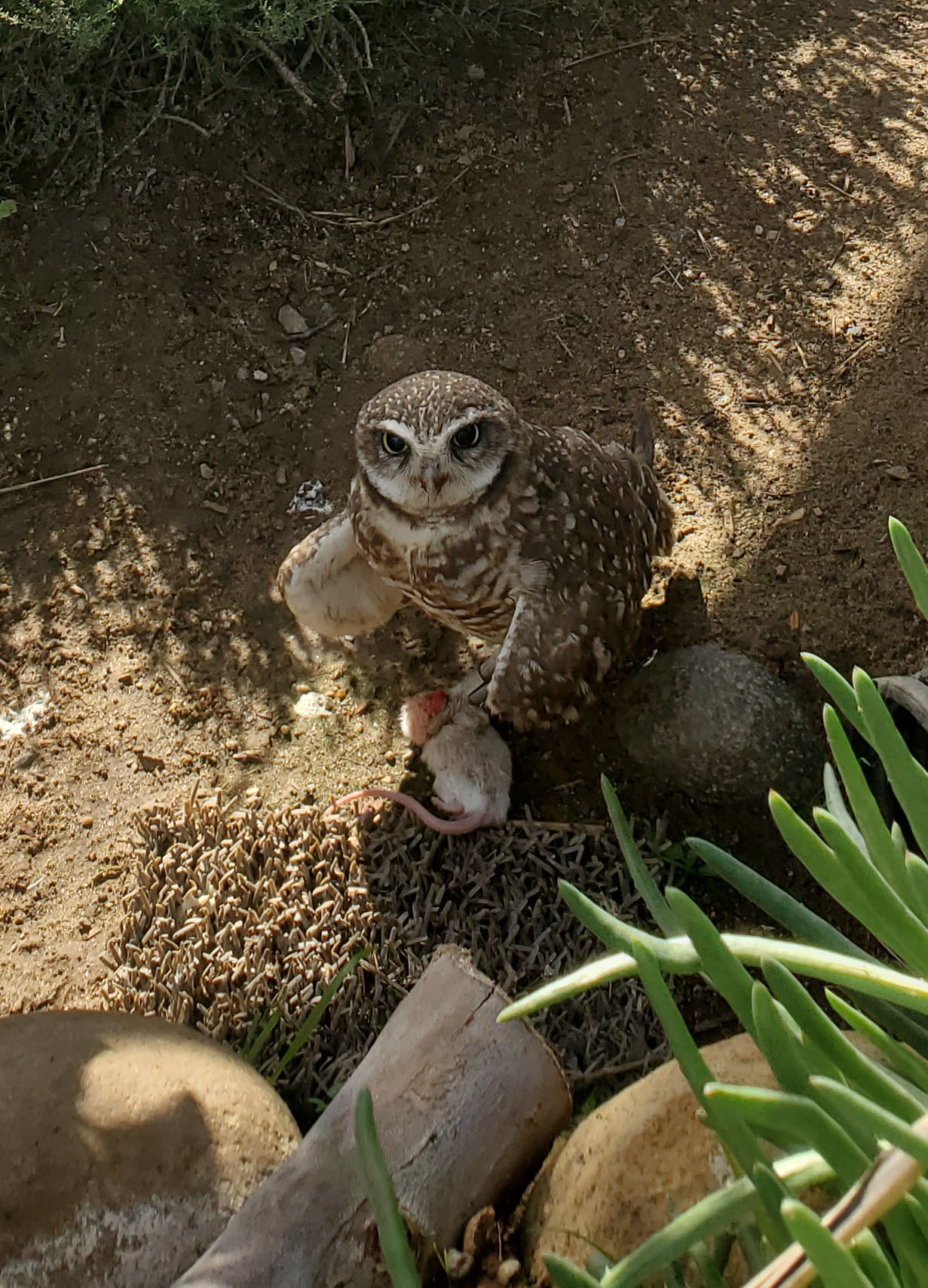
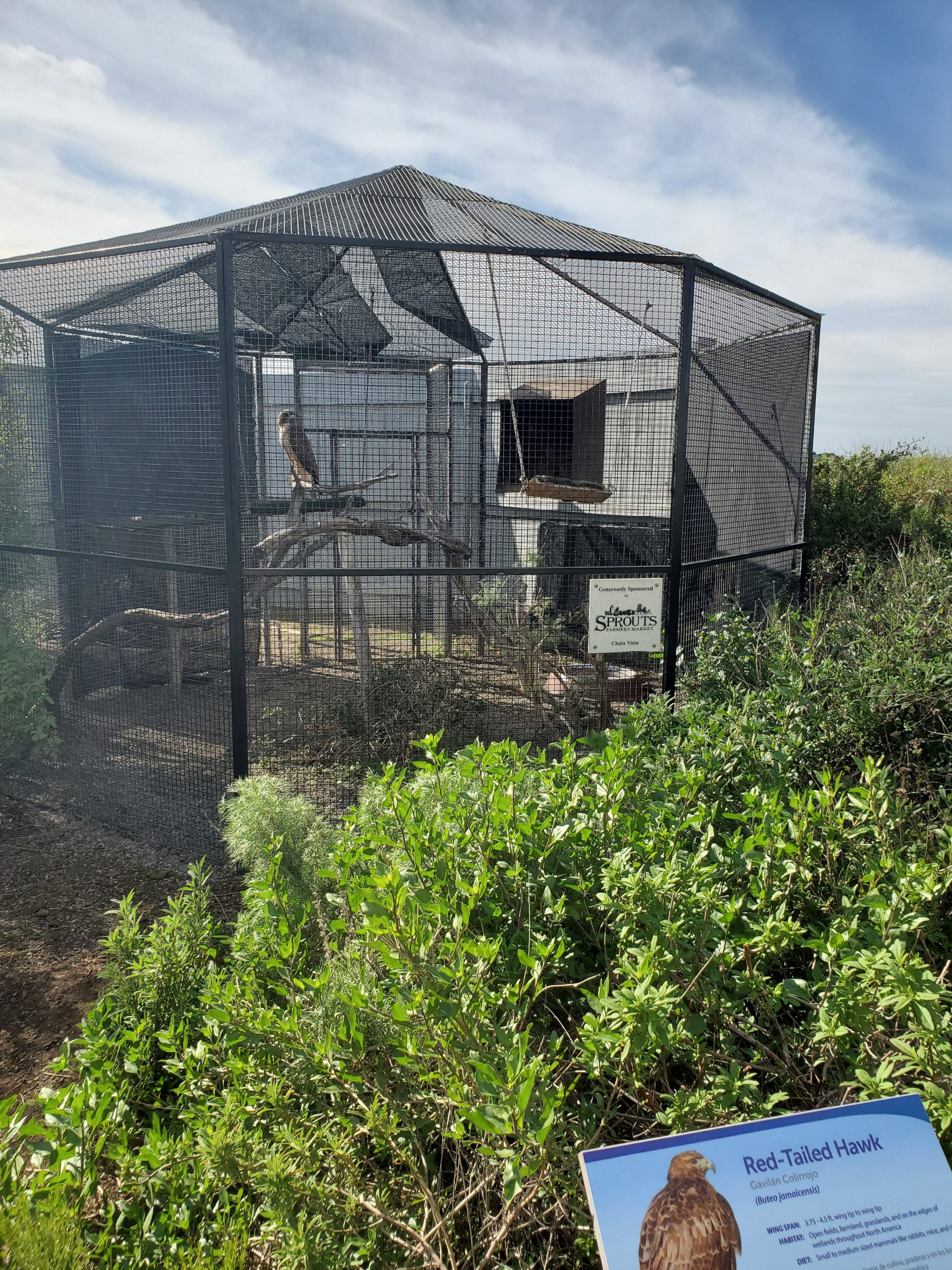
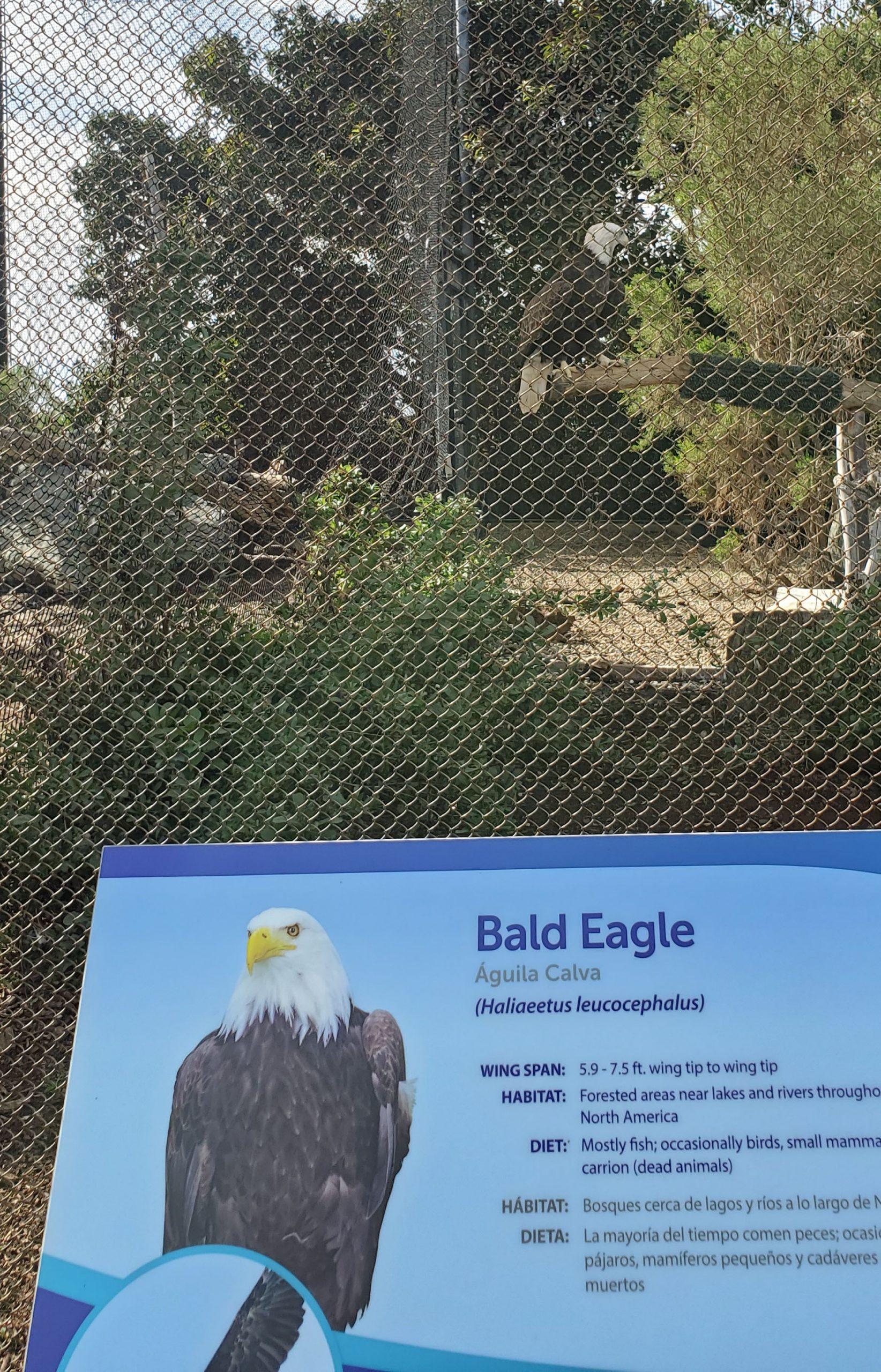
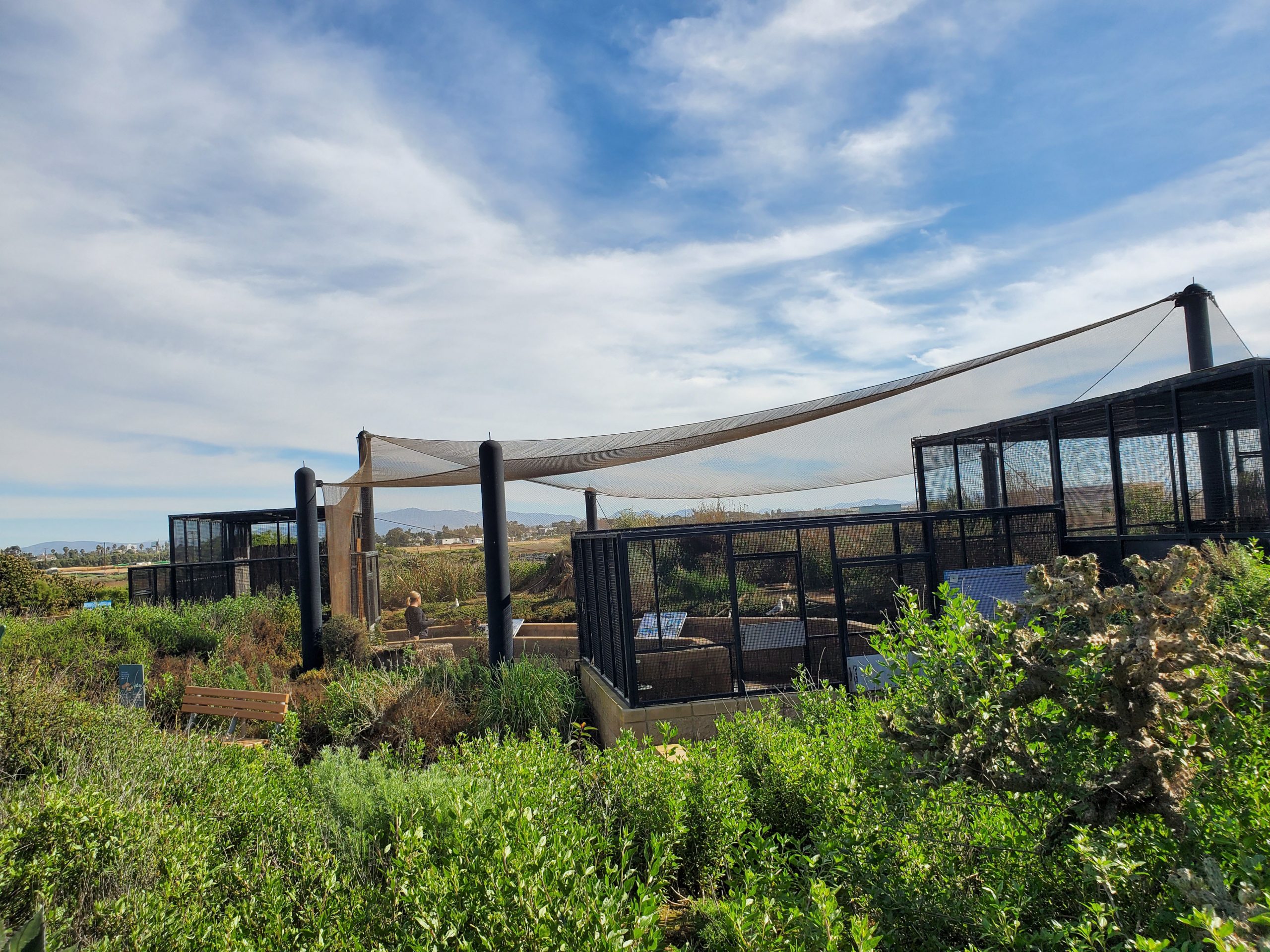
Native Pollinator Garden
The native pollinator garden is focused on bees and butterflies. This area, along with all the native plants will be seasonal (our latest visit was January 2020 so no bees). Right by the observation deck is an exhibiting on composting. On weekends they offer free composting workshops.
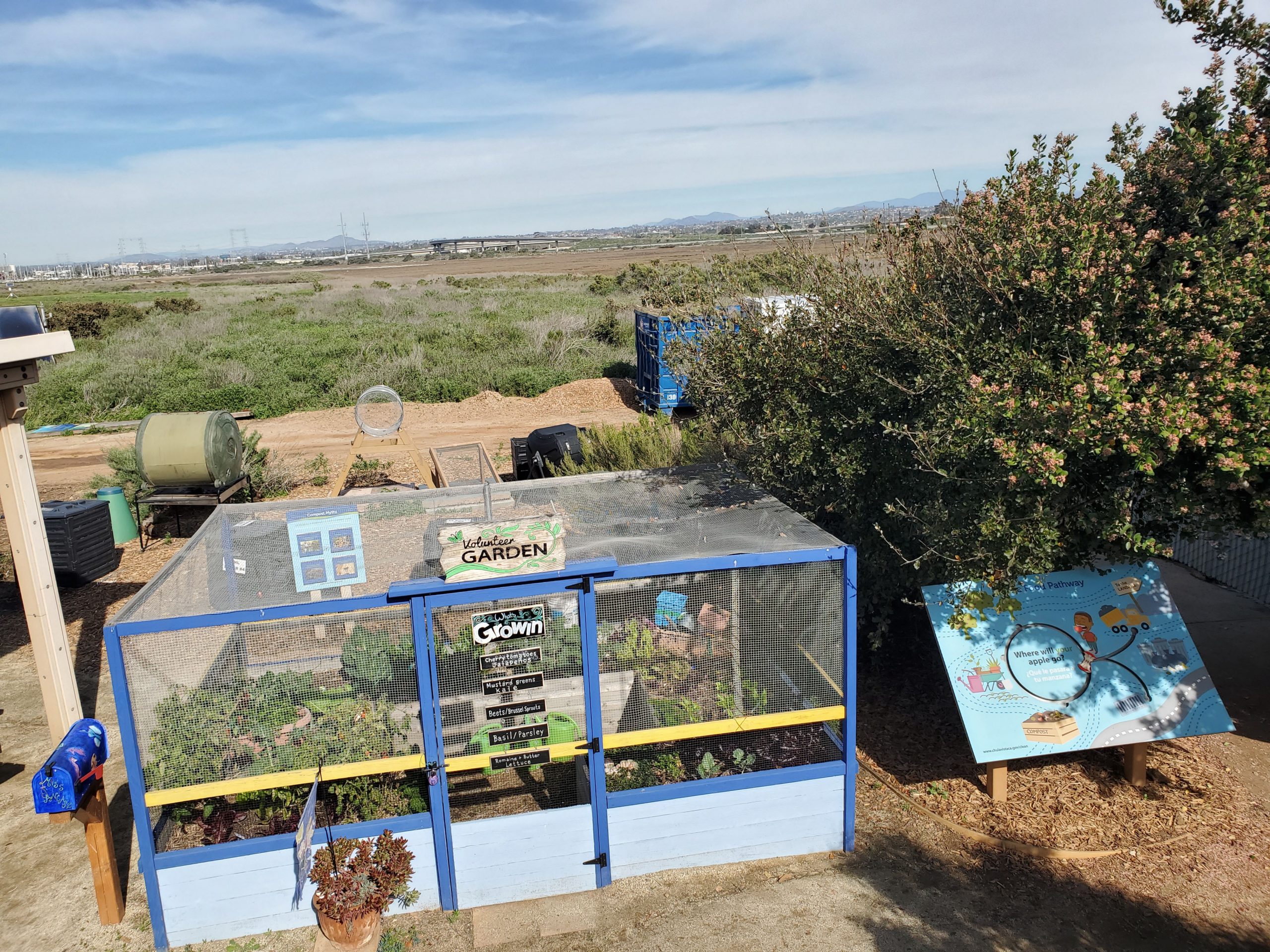
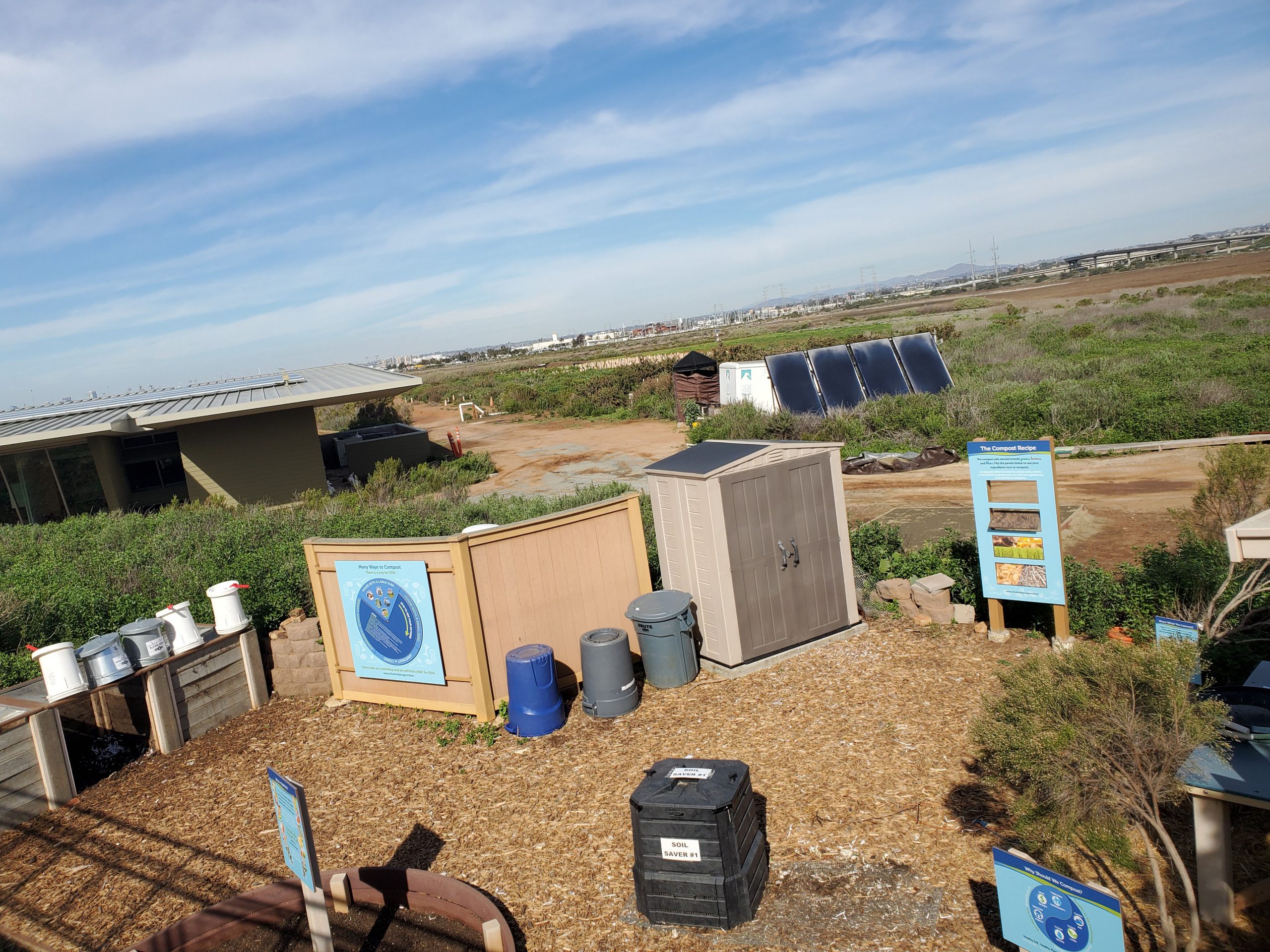
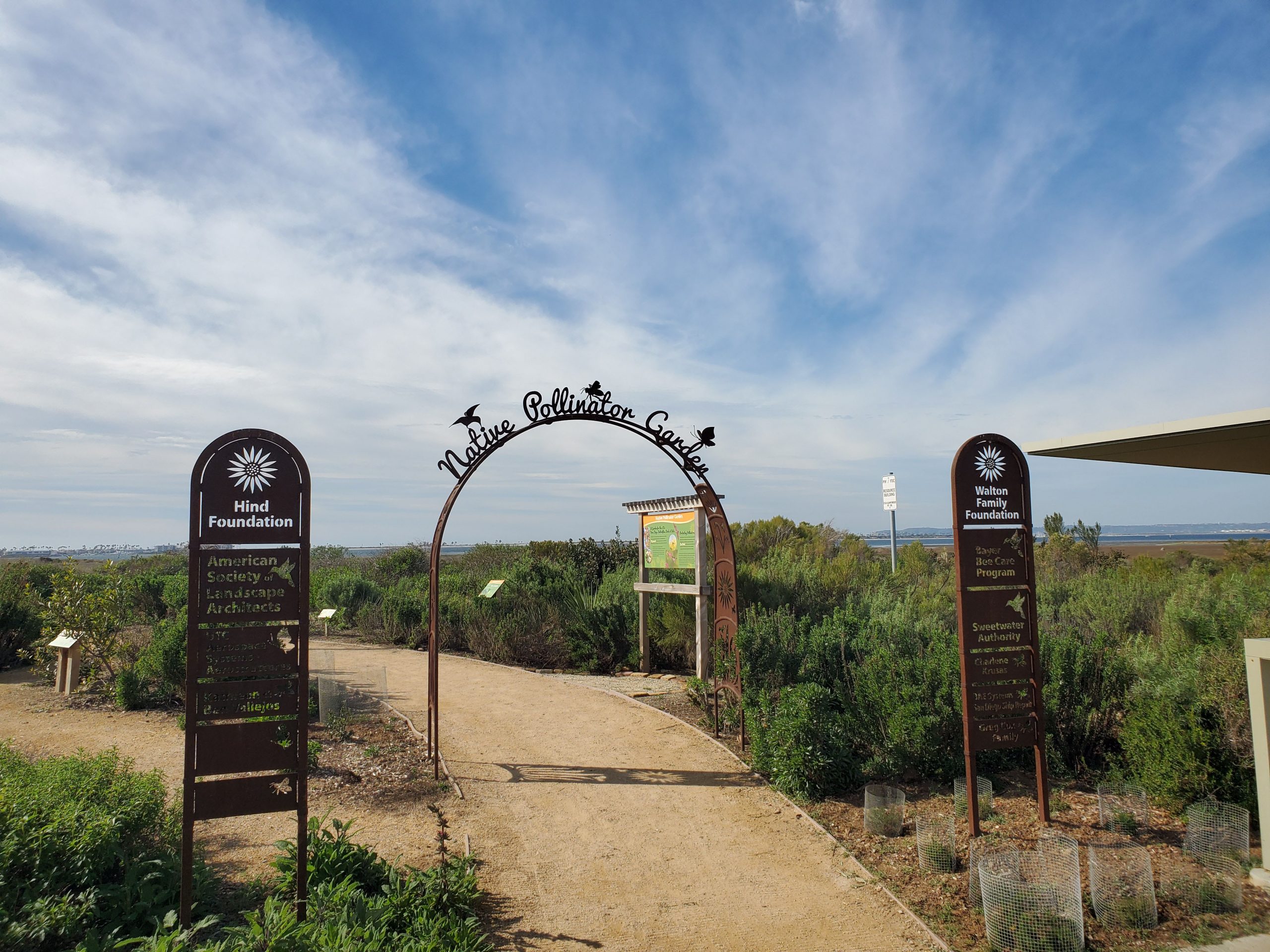
Walking Trails and Observation Deck
The Living Coast Discovery Center has 1.5 miles of trails that go out to San Diego Bay. There is also an observation deck that gives you great views of the area. To the south you can see Mexico, with the downtown San Diego skyline to the north.
As we mentioned, the Living Coast Discovery Center is part of a larger effort to open the Sweetwater River Reserve. The hikes of the Trail to Bay Challenge are designed to showcase how the San Diego Bay is part of a much larger ecosystem stretching 6,000 feet into the mountains.
The city of Chula Vista and the Living Coast Discovery Center are working to connect a trail system from the bay, 13 miles inland to the eastern border of Chula Vista.
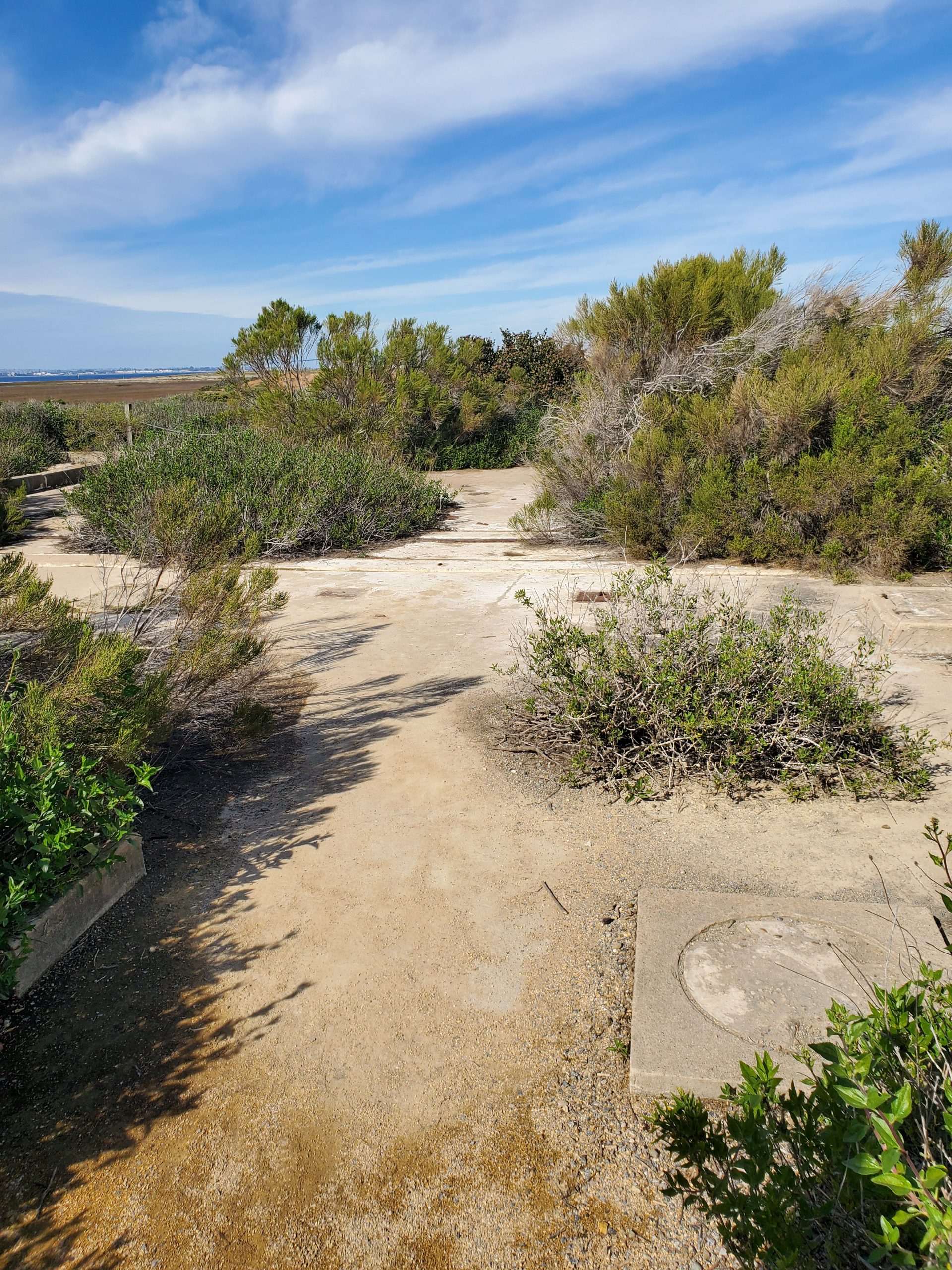
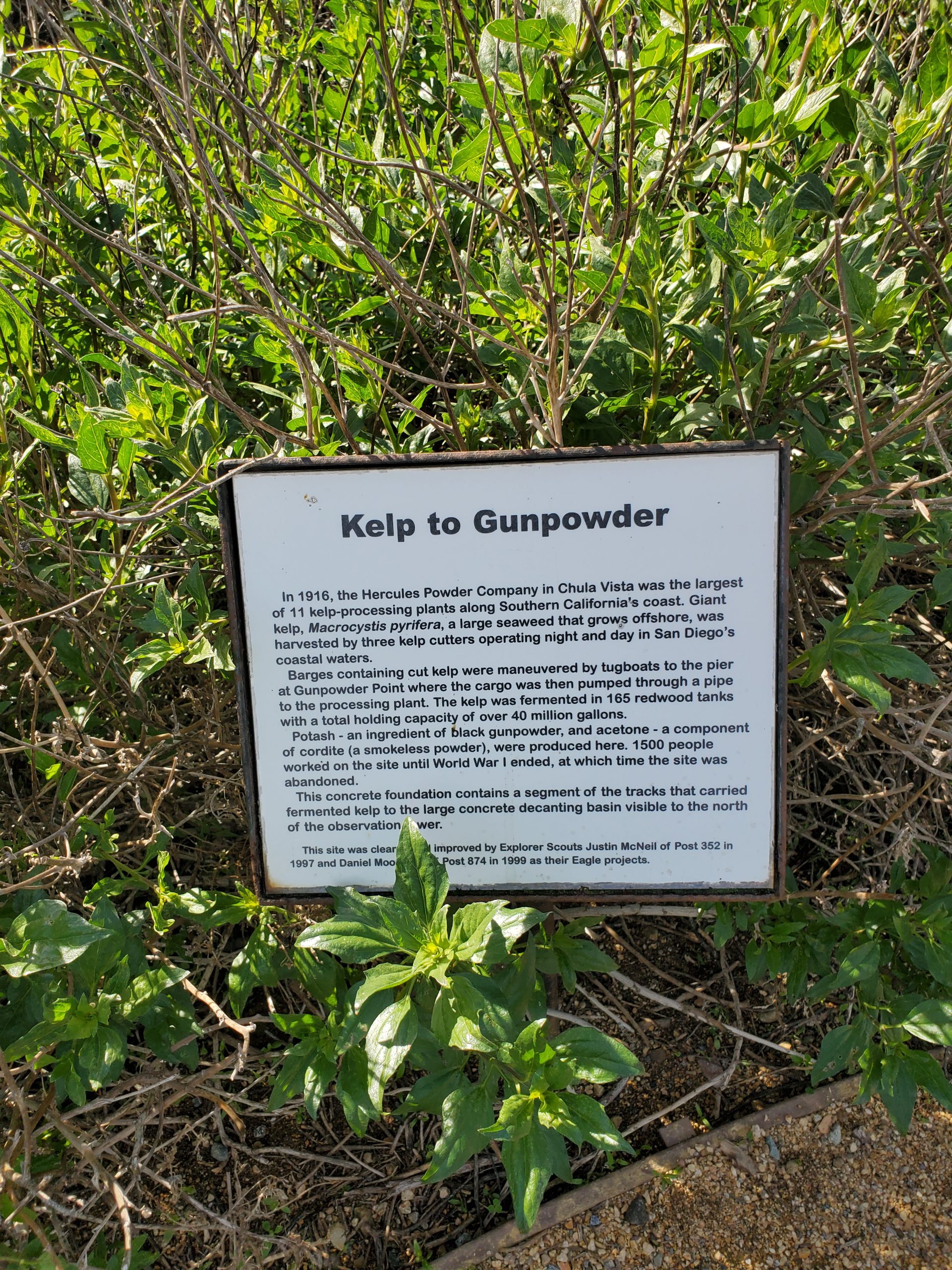
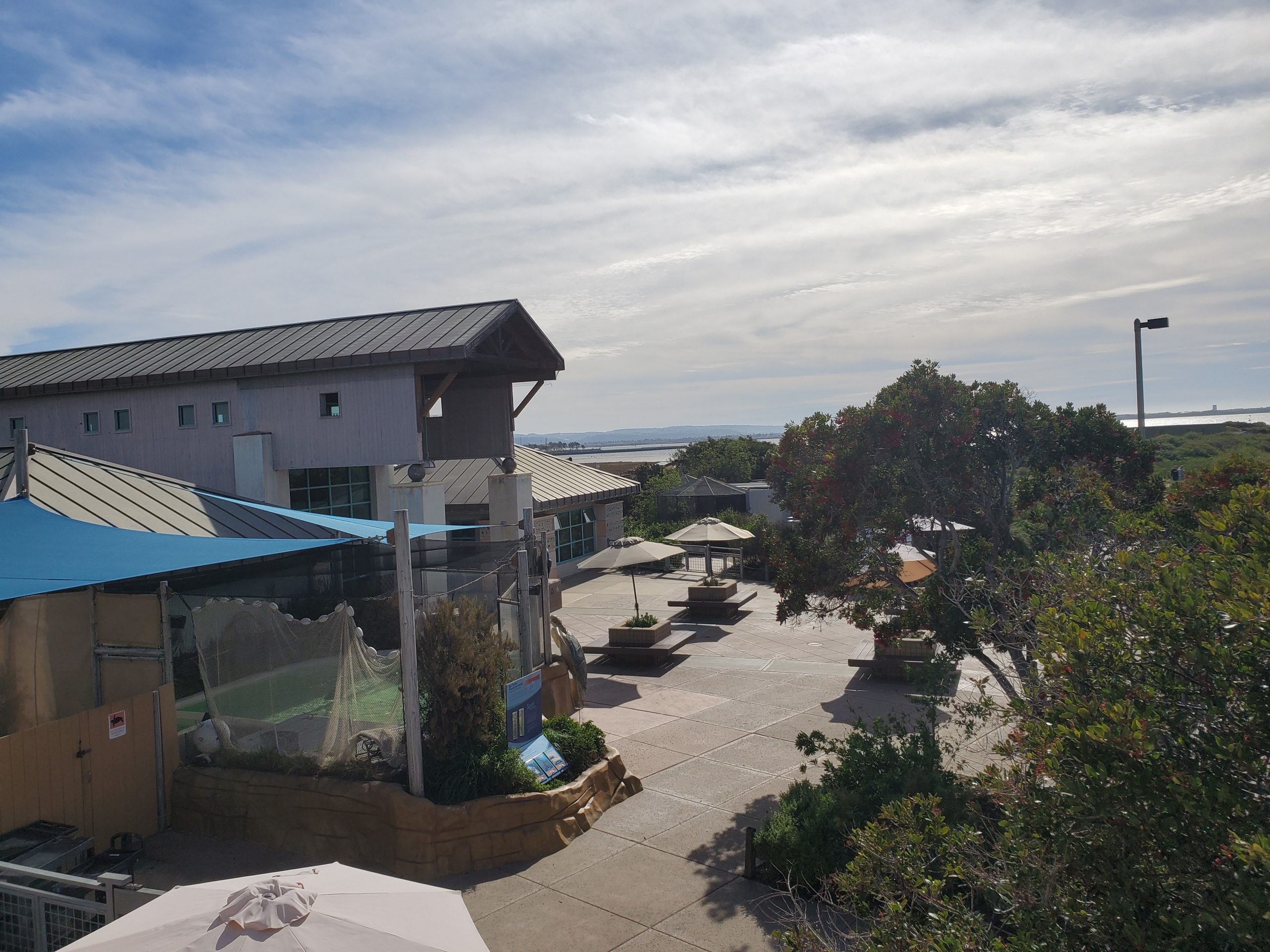
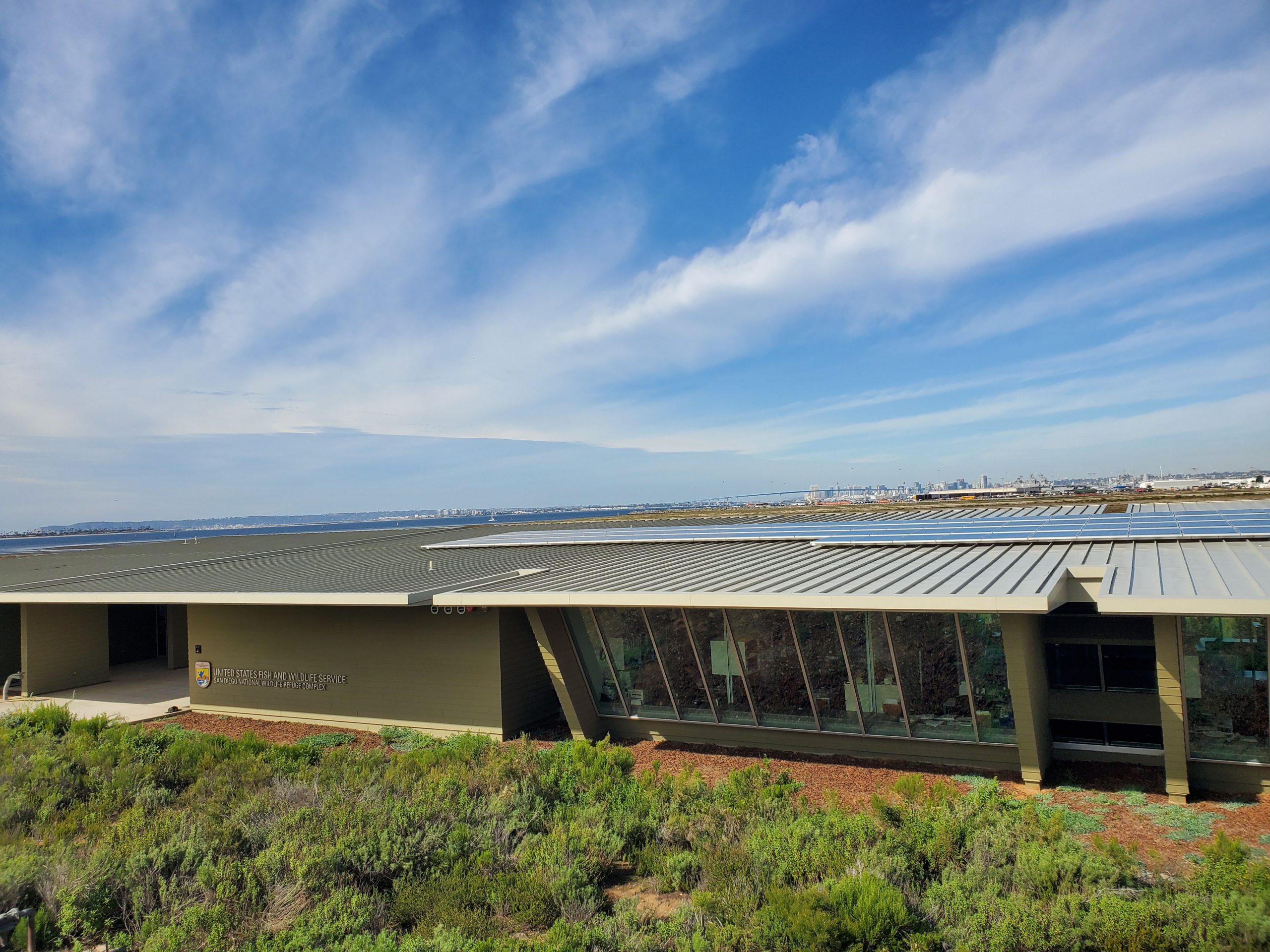
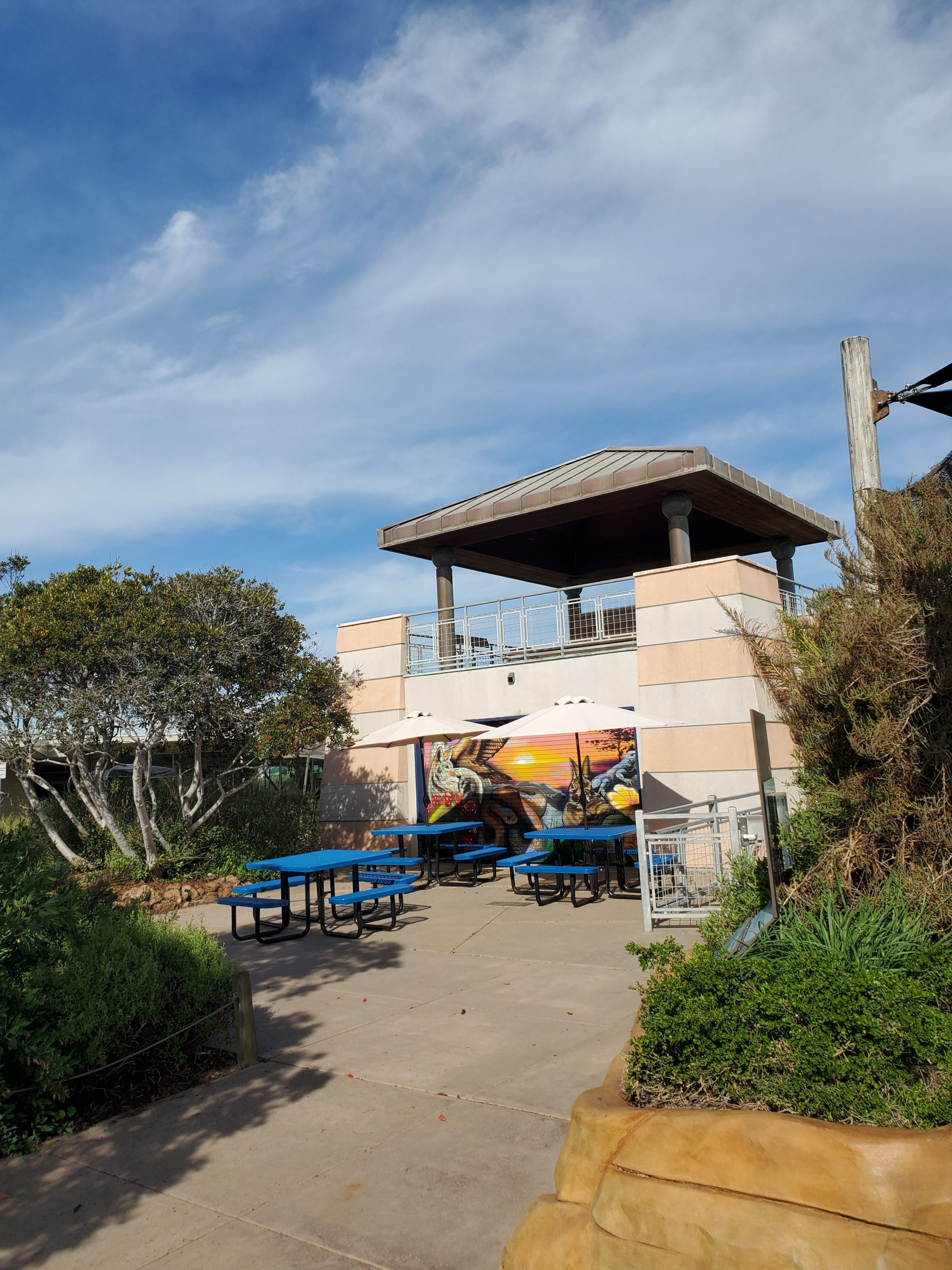
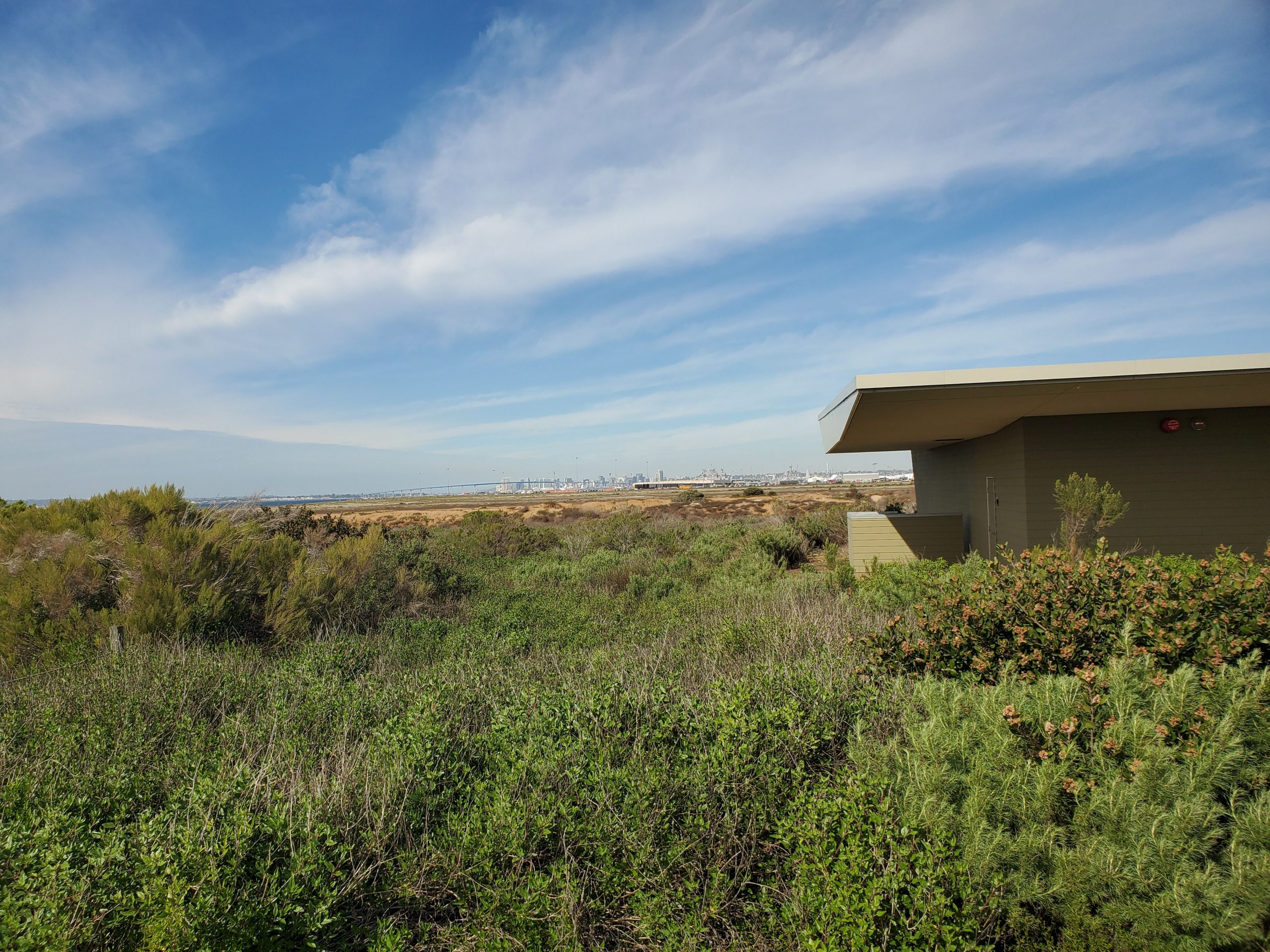
Dining
The Living Coast Discovery Center has a gift shop and some small vending machine style snacks. This area has some of the best Mexican places in San Diego. We always combine a trip to the center with a visit to a local restaurant.
Our favorite over the years has been Tacos El Gordo, a few blocks from the shuttle parking lot. There are actually two locations, the original on H Street, and a new location literally around the corner on Broadway.
Another option is to bring your own food and have a picnic. There are several area with picnic tables and the outdoor bay setting is very pleasant
